Contemporary Artists / China (PRC)
Chinese Contemporary Artists/News/China, World

LING JIAN
Between Figure and Fracture
Eli Klein Gallery in New York is presenting an exhibition by Chinese artist Ling Jian: Between Figure and Fracture, the artist's second exhibition at the gallery, from December 13, 2025, to February 7, 2026.
"The exhibition traces Ling’s ongoing inquiry into the convergence of realism and surrealism, the fragility of the human spirit, and the estrangement of our digital age." Drawing on notions of feminine beauty, Chinese identity, and consumer culture, Ling Jian's portraits of women are both hyperrealistic and exaggerated. In recent years, his work has evolved toward fragmentation, depicting bodies as surreal organs and abstract forms.
The artist traveled to Europe in the late 1980s. Since then, his paintings have fused classical Western portraiture with traditional Chinese motifs, incorporating elements such as gongbi-inspired details and cinnabar patterns. The artist works primarily in oil.
Lin Jian was born in 1963 in Shandong, China. He graduated from the Fine Arts Department of Tsinghua University in Beijing (1986). He has already had several solo exhibitions in China and Korea.
Ling Jian: Between Figure and Fracture - Exhibitions - Eli Klein Gallery

28 CHINESE ARTISTS IN NY
Metamorphosis
From September 10 to January 11, 2026, the China Institute Gallery in New York presents "Metamorphosis: Chinese Imagination and Transformation," a group exhibition bringing together the work of 28 established and emerging Chinese artists. The works cover media such as painting, sculpture, photography, installation, and video from 1974 to 2025. The exhibition includes paintings by Sun Xun (Time Vivarium-silk book) and an impressive 'Dream Chamber' by Bingyi. The 'Dream Chamber', specially created for the exhibition, was originally meant to recall the transformative environment of a Buddhist cave-chapel at Dunhuang in China. The main aim of these works is to draw attention to environmental issues. The artists include: Ah Xian, Xu Bing, Zheng Chongbin, Lu Yang, Yun-Fei Ji, Irene Chou, Ming Fay, Wang Tiande, Liu Xiaodong, Yin Xiuzhen, and Sun Xun.
https://chinainstitute.org/gallery-exhibitions/current-exhibition/
Leading Contemporary Artists in China
XU BING

Xu Bing, Book from the Sky, 1989-1991

Xu Bing, 1st Class, 2011, Installation view, The Allure of Matter Material Art from China, Los Angeles County Museum
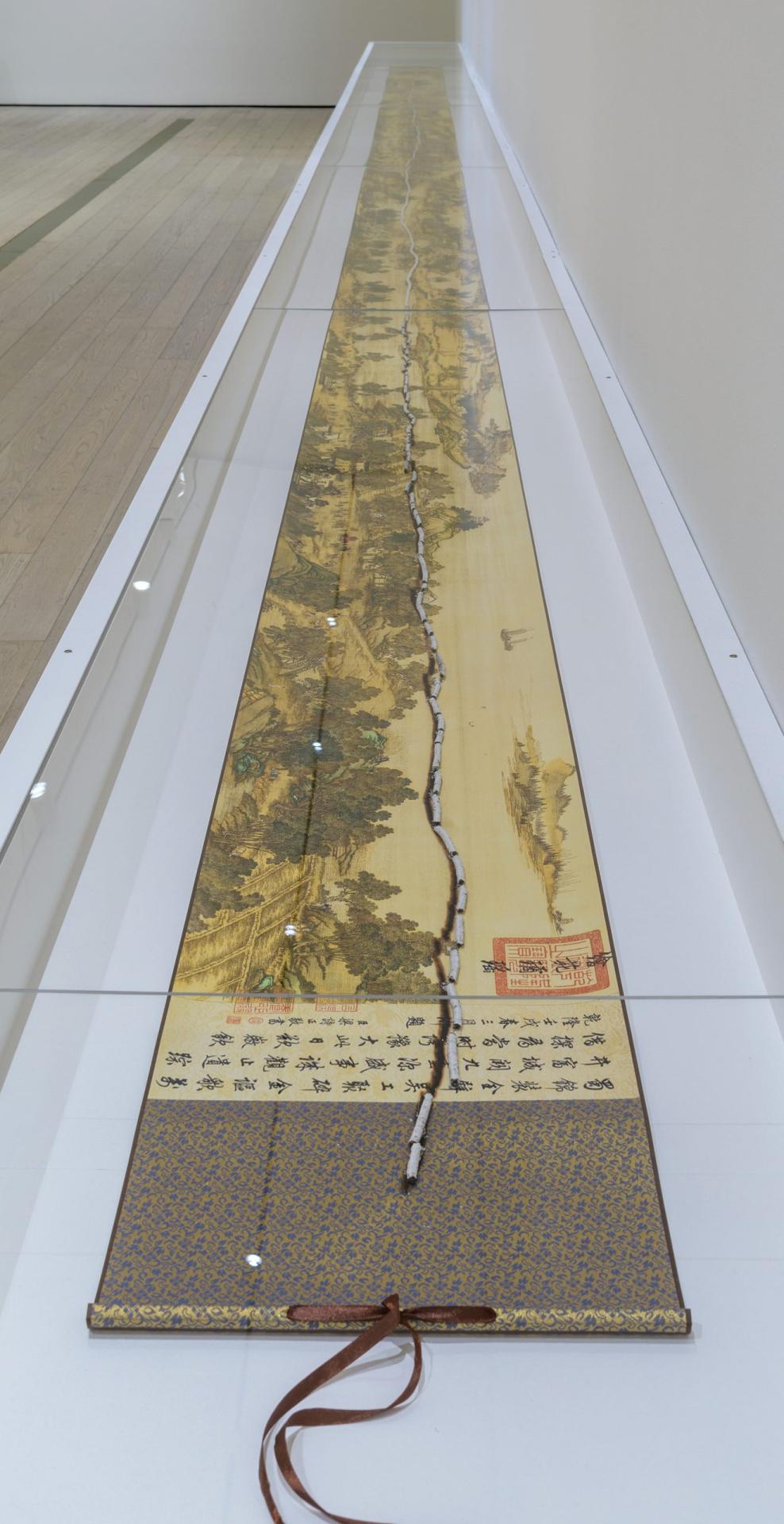
Xu Bing, Traveling Down the River, 2011 burned cigarette on a scroll in glass case, Smart Museum of Art

Xu Bing, Tobacco Book 2011, Photo Museum Associates LACMA

Xu Bing, Phoenix 2008-10, 2014, Cathedral of Saint John the Divine, Manhattan NY

Xu Bing, Phoenix Rising, 2022, Crow Museum, Dallas Texas

Xu Bing, Gravitational Arena, 2021-2022 mixed media installation, Museum of Art Pudong

Xu Bing : satellite, the first animated film shot in Space, 2024, Venice

Xu Bing, World Alchemy exhibition, Asia Society Dallas, 2024

Xu Bing
XU BING is a contemporary Chinese artist. He was part of the Chinese avant-garde movement. In the late 1980s, he came to prominence for his formal experiments with Chinese script, using woodcut and print to produce a vast series of absurd characters. Xu Bing uses a variety of media, materials and themes, including ink rubbings, stencils, glass, scrolls, computer manipulations and surveillance videos, as well as organic materials and live animals.
According to Artprice, Xu Bing's NFT digital artwork "Celestial Volume" sold for $314,000 in 2021, the highest price ever paid for a single NFT in China. According to Artprice, Xu Bing's sales reached €315k in 2023.
https://www.xubing.com/en/about
PROFILE OF THE ARTIST
Xu Bing was born in Chongqing, China, in 1955 and grew up in Beijing. He studied at the Printmaking Department of the Central Academy of Fine Arts in Beijing (1977 - 1981). He obtained his BA (1981) and MFA (1987). He was invited to the United States as an honorary artist in 1990. In 2007, he returned to China and took on several management positions at the Central Academy of Fine Arts. Since 2014, he has been head of the institution's academic committee. He currently divides his time between Beijing and New York, where he lives and works.
Since the late 1980s, Xu Bing has enlarged his exploration of how the written word might connect different writing systems and engage audiences from different cultures. For example, in his Tobacco Project (2000-2011), Xu Bing transformed different aspects of raw tobacco leaves, cigarettes, cigarette packaging and other marketing materials to explore the intertwined histories of the global economy, raw materials and the history of Chinese art.
In March 2014, Xu Bing unveiled his biggest project at that time, at the Cathedral of Saint John the Divine, in Manhattan. Phoenix, 2008-10, made up of two birds - each weighing 12 tonnes - was suspended in the nave. The two birds, mythical beasts, a male called Feng and a female called Huang, were made from detritus that the artist had taken from construction sites in Beijing's rapidly changing urban landscape. in 2022-2023, on display at the Crow Museum in Dallas, Texas, the bronze phoenixes (Feng and Huang), were placed on the Mezzanine of the Crow Museum Gallery. These represent an important story in Chinese folklore," explained Xu Bing, "and one that we must listen to without delay.
In 2019, the Consorci de Museus de la Comunitat Valencia presented Xu Bing's 'Art for the People' exhibition to the public at the Centre del Carme, a new graphic novel composed entirely of symbols and icons, with which the Chinese artist showed his universal language for the first time in Spain.
For his installation at the 60th Venice Biennale in 2024, "Xu Bing: Art Satellite - The First Animated Filmed in Space", the artist used space technology to respond to the inscription engraved on the Santa Veneranda chapel that "brings light and peace to Italy and indeed to the world". The exhibition features the world's first animated film, "Lake on a Satellite", filmed in space on the roof of a chapel. This short film, which lasts 3 minutes and 7 seconds, was shot using an old satellite in orbit, Ladybug-1.
Xu Bing's exhibition "Xu Bing: Word: Word Alchemy" at the Asia Society Texas Center in Houston, which runs until July 2024, brought together more than 50 of Xu Bing's most important woodcuts, videos, drawings, installations and other ephemera representing nearly 50 years of the artist's creative output.
The Museum of Art of Pudong in Shanghai presented the exhibition "Xu Bing: Gravitational Area" until 21 August 2024. It included a giant installation in Hall X of the museum, made up of 1,600 square calligraphic characters in metal. It formed an immense vortex of characters, stretching 30m from bottom to top. Beneath the work, the viewer only had access to the back of the texts. Their spatial elongation and overlapping make them illegible. The inverted texts were reversed and restored in the mirror image for normal perception, but viewers immersed in the work could never access its full image. The calligraphy of the word square in the installation transcribes a text by the philosopher Ludwig Wittgenstein, on the problem between perception and aspects. The exhibition has been on show at the museum since 12 August 2022.
Video
https://www.youtube.com/shorts/ZQiwb9yusLY
EXHIBITIONS
Xu Bing's recent solo exhibitions include: 2024 "Xu Bing: Art Satellite-The First Animated Film Shot in Space", Church of Santa Veneranda, Venice ; 2024-2022 "Zu Bing: Gravitational Area", Museum of Art of Pudong, Shanghai, 2024 Xu Bing: Word Alchemy, Asia Society Texas Center, Houston; 2023 Mythical Creatures: China and the World, Philadelphia Museum of Art, Time Gravity 2023 Cheng Du Biennale, Chengdu Art Museum.
Films: 2024 Xu Bing : Art Satellite, the First Animated Film Shot in Space, Church of Santa Veneranda in Venice, Universal / Remote, National Art Center, Tokyo
Xu Bing's work has been exhibited in many prestigious venues around the world, including the Museum of Modern Art, the MET in New York, the Guggenheim Museum and the Sackler National Gallery in Washington, D.C. He has also taken part in several international exhibitions, including the Venice Biennale, the Sydney Biennale, the São Paulo Biennale and the Johannesburg Biennale.
In January 2014, the Taipei Fine Arts Museum presented 'Xu Bing: A Retrospective', This was the artist's largest solo exhibition in Asia, bringing together his greatest pieces here.
PAST EXHIBITIONS:
https://www.xubing.com/en/about/soloexhibition
https://www.xubing.com/en/about/groupexhibition
LIU BOLIN

Liu Bolin, Grand Palais Paris, 2011

Liu Bolin, Art Paris 11, 2011, resin, fiber glass

Liu Bolin, Camouflages into graffiti mural, 2011

Liu Bolin, Family photo, 2012, Galerie Paris Beijing

Liu Bolin, La liberté guidant le peuple (Delacroix) photography, 2013

Liu Bolin, Iron Fist, Grand Palais, 2014

Liu Bolin, Ne fait plus qu'un avec les déchets, performance, Bordeaux, 2017

Liu Bolin, photographie, 2018, pigment printing, Collaboration with Ruinart - Oyster Lunch

Liu Bolin, Roma, 2018

Liu Bolin, Hiding on the 38th Parallel North, 2019

Liu Bolin, Galerie Paris-Beijing, 2020

Liu Bolin, Galleria Gaburro Firenze, 2023

Liu Bolin, Chaos N°7, Couple, 2024, Painted UV curable resin

Liu Bolin
LIU BOLIN is a contemporary Chinese artist. Trained as a sculptor, he also practices photography and performance art. Known as “the invisible man” or “the chameleon man” for his camouflage work, the artist blends into the landscape in his photographs.
PROFILE OF THE ARTIST
Liu Bolin was born in Shandong, China, in 1973. He graduated in sculpture from the Shandong University of Fine Arts, where he taught for 4 years. He continued his studies in Beijing, where he obtained a master's degree in sculpture (MFA) from the Beijing Central Academy of Fine Arts (2001). He turned to photography and performance after his studio was destroyed by the Chinese government in preparation for the Beijing Olympics in 2005. He lives and works in Beijing.
Liu Bolin's work is structured around four main themes: politics and censorship, Chinese tradition and culture, consumer society and press freedom.
“I disappear into my sets to denounce,” Liu Bolin declared in Le Monde newspaper on February 25, 2015. Concealed beneath the make-up - which can take hours to prepare, with only the help of his assistant painters - the artist is very often the subject of his creations. Liu Bolin mixes photography, happening and body art. For his photographs, he usually chooses locations that symbolize China's Cultural Revolution, or that show the great changes taking place in the country. For Liu Bolin, these are metaphors for expressing the sense of anonymity and ostracism he encounters as a contemporary artist in China. After the demolition of his studio in 2005, his work became decidedly more political, in the form of a silent protest against the state. He produced a self-portrait of himself motionless, covered in paint, merging with the rubble of his studio. He then began a series entitled “Camouflages”, combining performance and photography. For over 10 years, he has been pursuing his “Hiding in the city” series, which has made him a world-renowned artist.
Liu Bolin also creates sculptures. He makes lined-up, headless men with red hands over their eyes, or very thin male bodies with eyeless faces. “Man walks blindly through the world, unable to see clearly. He hides certain things from himself, and we hide things from him too”, he explains. He also makes sculptures that catch fire, like his “Burning man” series: “In Chinese tradition, the element ‘fire’ is associated with the color red, the color of the Chinese nation. Burning man turns red”. In 2014, Liu Bolin presented at Paris Art Fair an impressive sculptural work “Iron fist” representing his left fist engraved with the city of Beijing's propaganda slogan.
Liu Bolin created a tree of life for sickle-cell anemia children, presented in November 2023 at the dinner during LVMH's “Diner des Maisons Engagées”. It was to be auctioned at Sotheby's on February 20, 2024, in aid of the Robert-Debré hospital.
In June 2024, Surfrider Foundation Europe welcomed artist Liu Bolin to its Biarritz premises for an unprecedented performance. Committed to the oceans and coastline, the “chameleon man” disappeared live-streaming in front of a wall of garbage created with the participation of a school and college in Biarritz. He had already done the same performance in June 2017.
EXHIBITIONS
Solo exhibitions by Liu Bolin include: 2025 "Hiding in the city", galerie Danysz, Paris ; 2024 “Liu Bolin: Order out of Chaos”, Galerie Eli Klein, New York, Mimetismi, Museo di Scienze e Archeologia, Rovereto, Italy; 2023 Hiding In Florence, Sala d'Arme of Palazzo Vecchio, Florence; 2019 Liu Bolin: Visible/Invisible, Museo delle Culture, Milan, Liu Bolin: The Invisible Man, The Gaviria Palace, Madrid, Liu Bolin: Continuous Refle(a)ction, Riverside Art Museum, Beijing, The Bigger Picture - Liu Bolin, Kunstlinie Almere Flevoland, Almere, The Netherlands (2019).
BAFA Contemporary Gallery in London presented “Vanishing Point”, Liu Bolin's first exhibition in the UK - previously unseen photographic works - from June 20 to September 15, 2018.
In October 2017, the Maison Européenne de la Photographie organized a retrospective of Liu Bolin.
From January 27 to April 12, 2024, Liu Bolin took part in the group exhibition “I AM FINE - Identity in Focus” at Galerie Danysz in Paris.
He took part in a group show “Encore et Encore” at the Caring Gallery in Paris in March 2023.
The artist participated in the group show “Art History”, organized by Danysz Shanghai - The Bund, from September 24 to October 30, 2022.
PAST EXHIBITIONS
ZENG FANZHI

Zeng Fanzhi, Mao I, From the MassesTo The Masses, 1993, oil on canvas

Zeng Fanzhi, Hospital, 1994, oil on canvas

Zeng Fanzhi, Mask Series, 1996, oil on canvas

Zeng Fanzhi, The Last Supper, 2002, oil on canvas

Zeng Fanzhi, portrait, 2004, oil on canvas

Zeng Fanzhi, Hare, 2012, oil on canvas

Zeng Fanzhi, Van Gogh III, 2017, oil on canvas

Zeng Fanzhi Untitled (detail) 2018, Los Angeles County Museum of Art, 2019, photo Zeng Fanzhi

Zeng Fanzhi, Lóng Táitóu II, 2019–23, oil on canvas

Zeng Fanzhi, Arhat IX, 2019 – 2023, 2019–23, oil on canvas

Zeng Fanzhi, D Series 2021, No.3, oil on canvas

Zeng Fanzhi, Untitled, 2021, oil on canvas, Hauser and Wirth

Zeng Fanzhi, E Series, 2022, No.14, 2022, oil on canvas, Hauser and Wirth

Zeng Fanzhi, Skull-III, 2019–23, oil on canvas

Zeng Fanzhi, Installation, Venice Biennale 2024, with the collaboration of the architect Tadao Ando

Zeng Fanzhi portrait, 2019
ZENG FANZHI is a contemporary Chinese visual artist. His paintings blend the contributions of Western art with Chinese tradition and culture. He is currently the most highly-rated artist in China.
Zeng Fanzhi ranked first in the Hurun China Art List 2023 auction rankings, with sales of US$21.4 MN. With cumulative sales of $14,361,710, he ranked 133rd in Artprice's Top 500 contemporary artists worldwide by auction revenue in 2023.
A few days before the opening of his first French exhibition at the Musée d'Art Moderne de la Ville de Paris on 18 October 2013, his "Last Supper" - an ironic version of Leonardo da Vinci's famous Last Supper - broke a record for both a work of contemporary Asian art and a living Chinese artist at Sotheby's in Hong Kong, fetching a staggering HK$160 million (€17 million). In November 2017, he sold his painting "Smiling Bei Ke Ning" (1989) for HK$4.3 million at Bonhams HK.
Recently the large formats of Zeng Fanzhi's works are sold by Hauser & Wirth starting at $500,000 and, possibly, up to $1.8 million.
At Art Basel Hong Kong 2025, the artist sold a work for 1,5 M$ US (about 1,4 M€). At the Hong Kong Spring Auctions, early April 2025, Zeng Fanzhi sold “Mask Series No. 4” for 2,452,007 USD.
PROFILE OF THE ARTIST
Zeng Fanzhi was born in 1964 in Wuhan (China). Educated at the School of Fine Arts in his native city, he discovered contemporary Chinese and Western art. He graduated from the Hubei Institute of Fine Arts in Wuhan (1991). In 1993, he moved to Beijing, where he has lived and worked ever since.
Zeng Fanzhi's work ranges from portraits and rural landscapes to more political subjects. It is a mixture of Chinese history and personal history. His memories of his youth, when he lived near the hospital in Wuhan, mark the first series of canvases depicting operations, waiting rooms, meat and undressed bodies. Other paintings from the 2000s recall China's political past, such as Tian'An Men, which shows Mao (2004). Zeng Fanzhi grew up in the Maoist revolution. The scarlet scarf of the Red Guards, which he was inexplicably deprived of, is a leitmotif in his work. Later, the tie replaced the red scarf. Only the hands stand out: huge, red and gnarled, they speak of his working-class past. His loneliness when he arrived in Beijing inspired the Mask series: "Everyone was wearing costumes", he says, "but there was something a little false about them. Behind most of these masks was me. I had very few friends". They're all smiling, but what faces do they have behind their masks? While the paintings in the Mask Series are influenced by Pop Art, the portraits and landscapes are closer to a darker abstraction. His gigantic polyptychs, lined with brambles and teeming with animals - like this gigantic hare, reminiscent of Albrecht Dürer's tiny hare - and human bodies, have a restrained expressionism that harkens back to German painting.
In his Last Supper, inspired by Leonardo da Vinci's Last Supper, painted in 2001, Judas "wears a golden tie, which evokes the power of money, capitalism", explains Zeng Fanzhi. Zeng Fanzhi has revisited Leonardo da Vinci's famous painting in his own way, adding a modern touch by depicting 13 Chinese schoolchildren, red ties around their necks, eating a watermelon. However, Zeng Fanzhi does not claim to be a political figure in the strict sense of the term.
The first French retrospective of Zeng Fanzhi's work was held from 18 October 2013 to 16 February 2014 at the Musée d'Art Moderne de la Ville de Paris.
In 2017, the Van Gogh Museum in Amsterdam presented six works by Zeng Fanzhi. The artist, a great admirer of Vincent Van Gogh, created six paintings inspired by Van Gogh’s self-portraits.
Recently Zeng Fanzhi's work has evolved. His new oil paintings have emerged from his decades of research into colour theory, drawing on and challenging Impressionist and Pointillist practices. Layers of brushstrokes create figurative elements that are easily recognisable from a distance, but which, when seen up close, dissolve into the materiality of the oil paint. His paintings are made up of a multitude of thick dots of colour.
As in his previous works, Zeng Fanzhi continues to explore the landscape. In 2023, in a solo show at Hauser & Wirth in Los Angeles, he presented a dozen large-scale abstract paintings. In his Series E, the artist has created a complex abstract landscape of sinuous lines unfolding against a luminous cyan background. In parallel to his experimentations with ‘landscape’ painting, Zeng continued to forge ahead in his portraiture studies: the We series comprises distorted faces painted at extremely close range, employing large, circular brushstrokes that create a frenzied and urgent presence.
Zeng Fanzhi was present at the 60th Venice Biennale 2024, at the Scuola Grande della Misericordia. He presented an exhibition entitled “Near and Far / Now and Then”. The exhibition featured recent abstract paintings and handmade works on paper, created with ink, graphite, chalk and gold dust, among other mineral pigments.
EXHIBITIONS
Zeng Fanzhi's most recent solo exhibitions include: 2024 Scuola Grande della Misericordia, 'Zeng Fanzhi: Near and Far / Now and Then', Venice, Italy; 2023 The Museum of Art Pudong, 'Zeng Fanzhi. Old and New (Paintings 1988-2023)', Shanghai, Hauser & Wirth, 'Zeng Fanzhi', Los Angeles CA
PAST EXHIBITIONS
CAI GUO-QIANG

Cai Guo Qiang, Fallen Blossoms, gunpowder explosion, Philadelphia Museum, 2009

Cai Guo Qiang, mystery circle LA, 2012

Cai-Guo-Qiang, installation, tiger gunpowder, New York, 2012

Cai Guo-Qiang, Homeland, 2013
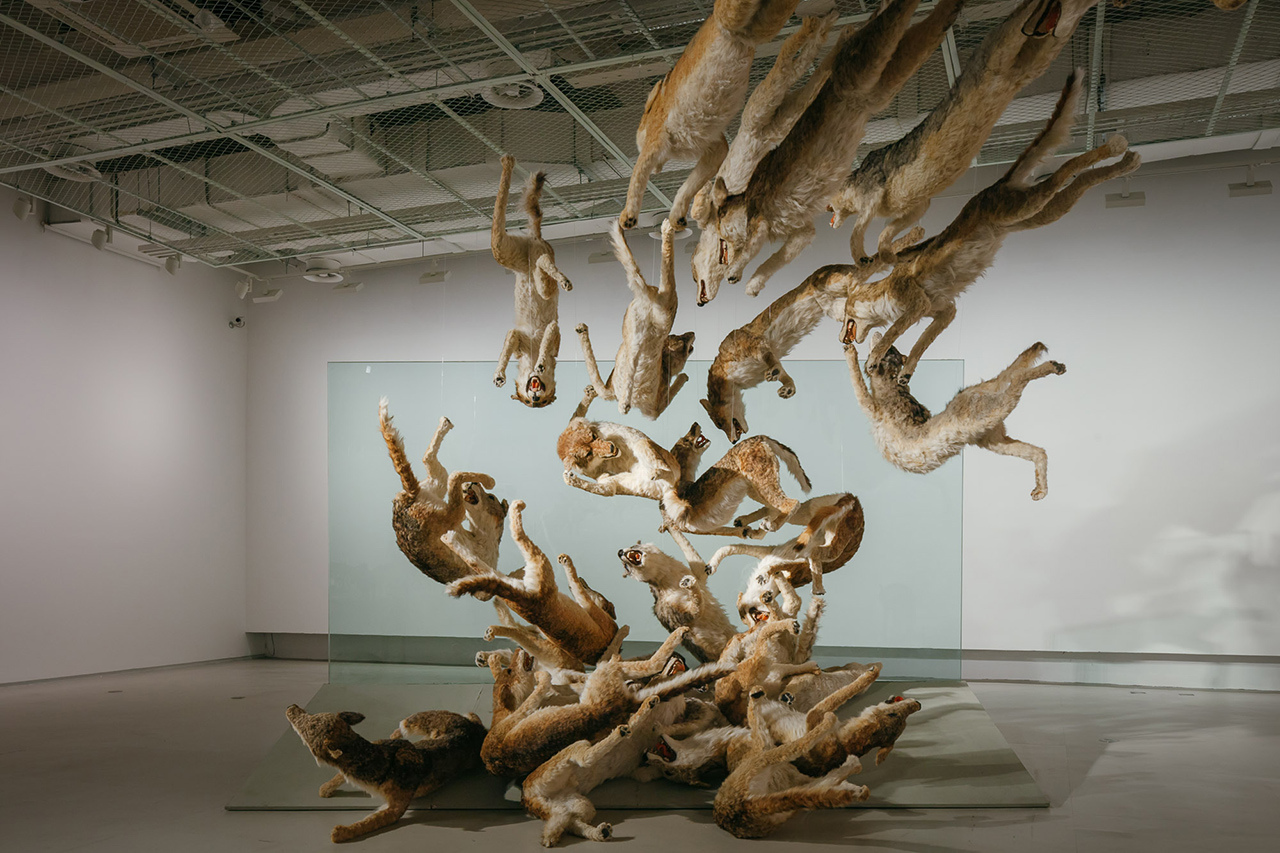
Cai Guo-Qiang, the Ninth Wave exhibition, Power Station of Art, Shanghai, 2014

Cai Guo-Qiang, The Return, There and Back Again Exhibition, 2015, Yokohama

Cai Gguo Qiang, sky ladder fireworks, 2014

Cai Guo-Qiang, El Prado Museum, 2017

Cai Guo-Qiang, explosion, Pompei, 2019, photo Riccardo Siano

Cai Guo-Qiang, 2020, VR work Sleepwalking in the Forbidden City Cai Studio

Cai Guo-Qiang, 2020, VR work Sleepwalking in the Forbidden City, Cai Studio

Cai Guo-Qiang, When the Sky Blooms with Sakura, 2023 Saint-Laurent, Tokyo Art Center

Cai Guo-Qiang, We-Are, Explosion Event, 2024, Los Angeles

Cai Guo-Qiang, Material Odyssey, 2024 USC Pacific Asia Museum Pasadena

Fireworks, Centre Pompidou Paris, October 2025

Cai Guo-Qiang
CAI GUO-QIANG is a Chinese visual artist who has become a master of pyrotechnic events. He was chosen to design the fireworks for the 2008 Beijing Olympic Games.
“Homeland,” an eight-panel painting in ochre colour reminiscent of a cave painting and featuring his hometown, Quanzhou, sold in September 2013 at Christie's in Shanghai for $2.45 million. A set of 14 drawings by the artist, using explosive powder, for the Asia-Pacific Economic Cooperation, was the most expensive work of contemporary art sold at auction in Asia in 2007, at $9.5 million.
Cai Guo-Qiang’Red Birds sold for for $1.2 million at Art Basel 2025, in Basel.
Cai Guo-Qiang ranked 900th in 2024 Artprice Ranking (Category: colour drawings), with sales of 540K euros.
ARTIST PROFILE
Cai Guo-Qiang was born in Quanzhou, Fujian, in December 1957. In the early 1980s, he was trained in stage design at the Shanghai Theatre Academy. From December 1986 to September 1995, he spent almost nine years in Japan. He studied at the University of Tsukuba from 1989 to 1991, where he perfected his skills in the Plastic Arts and Mixed Media Research Laboratory. He has lived and worked in New York since 1995.
While living in Japan, Cai Guo-Qiang explored the properties of gunpowder in his drawings, which led him to create his own explosions. In his work, Cai Guo-Qiang draws on a wide variety of materials, symbols, narratives and traditions: elements of feng shui, Chinese medicine and philosophy, images of dragons and tigers, roller coasters, computers, vending machines and gunpowder. Since the tragedy of September 11, he has been reflecting on his use of explosives as both metaphor and material.
On September 15, 2024, Cao Cuo-Qiang's pyrotechnic show “We Are: Explosion Event,” at the Los Angeles Memorial Coliseum, unfortunately experienced serious technical incidents.
Spectacular daylight fireworks performance by Cai Guo-Qiang, accompanied by drones in the skies over Quanzhou (“Red Sails”), on December 9, 2024
Grandiose fireworks by Cai Guo-Qiang on October 22, 2025, in front of the Centre Pompidou in Paris, to celebrate the museum's five-year closure.
EXHIBITIONS
Cai Guo-Qiang's latest solo exhibitions include: 2025 Cai Guo-Qiang solo exhibition, White Cube, New York, 'Gunpowder and Abstraction 2015–2025', White Cube Bermondsey gallery ; 2024 September 15, “”We Are: Explosion Event,” Los Angeles Memorial Coliseum, as part of the Getty's PST Art festival ; 2023 Cai Guo-Qiang: Ramble in the Cosmos-From Primeval Fireball Onward, The National Art Center, Tokyo ; 2021 Cai Guo-Qiang: Odyssey and Homecoming, Museum of Art Pudong (MAP), Shanghai, Jul. 8, 2021-Mar. 7, 2022 ; 2020 Odyssey and Homecoming, The Palace Museum, Beijing,
His works are also shown in group exhibitions, including The Shape of Time: Highlights of the Centre Pompidou Collection, Vol.1, Center Pompidou x West Bund Museum, Shanghai (Nov. 8-May 9, 2020), Fondation Cartier pour l'art contemporain, A Beautiful Elsewhere, Power Station of Art, Shanghai (Apr. 25-Jul. 29 2018), or at the São Paulo Biennale (2004), the Whitney Biennale (2000) and three Venice Biennale exhibitions.
Cai Guo-Qiang presented 'Cai Guo-Qiang: A Material Odyssey', Pacific Asia Museum, Los Angeles, Sept. 17, 2024-Jun. 15, 2025.
Cai Guo-Qiang has received numerous awards, including the forty-eighth Venice Biennale International Golden Lion Award and the CalArts/Alpert Award in the Arts.
Past exhibitions
CAO FEI

Cao Fei, A Mirage COSplayers, 2004
Cao Fei, A portrait of China Tracy, Cao Fei’s Second Life avatar, 2007

Cao Fei, RMB City A Second Life City Planning by China Tracy aka Cao Fei Color video, with sound 2007, Guggenheim Museum NY

Cao Fei,The birth of RMB city , 2007

Cao Fei, SL China Tracy RMB City Planning Online Project in Second Life (2007-2011)

Cao Fei, China Tracy Second Life Documentary Film, 2007, Asian Society NY, 2021

Cao Fei, Haze and Fog, Tate Modern, 2013

Cao Fei, “La Town White Street', 2013 Vitamin Creative Space

Cao Fei, Prison architect, film, 2018

Cao Fei, Still from Asia One, 2018, video

Cao Fei, Nova, HD video, color, sound, 2019

Cao Fei Duotopia, 1st edition, 2022
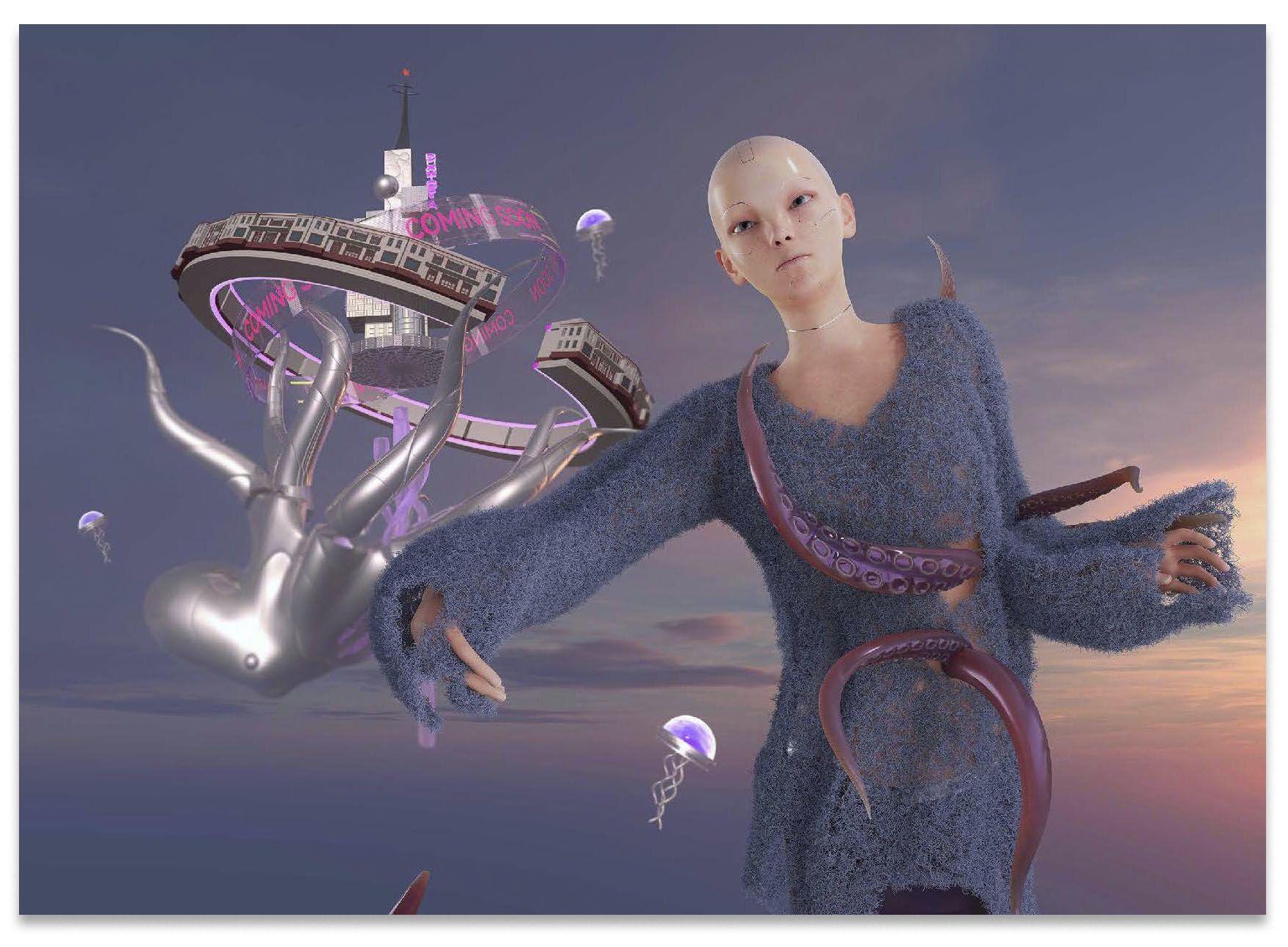
Cao Fei, Oz, video, 2022

Cao Fei, Kunstbau Ausstellung installation, 2024, Lenbachhaus

Cao Fei, Tidal Flux, Museum of Pudong, 2024

Cao Fei
CAO FEI is one of the most internationally acclaimed contemporary Chinese artists of her generation. She is one of the most innovative young artists to have emerged in China in recent years, and one of the most important representatives of post-digital art. She is also the only woman to feature among the top 10 contemporary Chinese artists. She was named "Best Artist" by the Chinese Contemporary Art Awards in 2016. She is also the only Chinese—artist commissioned to create a BMW Art Car in 2017. Inspired by cinema, advertising, manga and theatre, Cao Fei creates video and multimedia installations.
Cao Fei has recently been recognized as one of the world's most influential artists.
http://www.caofei.com/about.aspx
PROFILE OF THE ARTIST
Cao Fei was born in 1978 in Guangzhou, Guangdong province. She obtained her BFA from the Guangzhou Academy of Fine Arts (2001). She lives and works in Beijing.
Cao Fei mixes social commentary, pop aesthetics, references to surrealism and reflects on the rapid and chaotic changes taking place in Chinese society. She creates multimedia projects that explore the experiences of young Chinese people busy developing strategies to overcome and escape the realities of a rapidly changing society. According to the director of MoMa PS1, Klaus Biesenbach, "Cao Fei visualises the tension that a person of her generation can experience on a daily basis in China".
Cao Fei has immersed herself in the currents of world pop. In COSPlayers (2004), a work composed of videos and photographs, the artist became part of the Chinese cosplay community, a group of young people who get together to dress up as characters from imaginary Japanese cartoons.
In 2007, she produced the Second Life video I Mirror (2007), featuring her avatar, China Tracy, whose adventures in a parallel world could be followed. She has created a virtual city (RMB CITY: A Second Life City Planning, 2007) and (Live in RMB City, 2009).
Her film “Haze and Fog” (2013), is about the apocalypse unfolding in Beijing's vast housing estates, with their pollution and crowds. Haze and Fog was awarded third place for the Piedra de Sal Award by the 13th International Cuenca Biennial. The following year, Cao Fei created “La Town”(2014), a stop-action film using miniature figurines and architectural models, which depicts a society on the brink of destruction. His film was shown at the Arsenal Pavilion at the 56th Venice Biennale.
In 2018, for his fiction film and multimedia installation Asia One, commissioned by the Guggenheim Museum, Cao Fei visited some of China's most advanced industrial facilities, including the world's first fully automated sorting center in Kunshan, Jiangsu province. For this project, a hyper-realistic vision of the near future, she focused her vision from the present to the future by examining the effect of technology on human relationships.
“Cao Fei” exhibited at MoMA PS1, New York, and at the 9th Berlin Biennale in 2016. From September 8 to December 9, 2018, Ullens Center for Contemporary Art (UCCA) presented Cao Fei's first institutional solo exhibition in China, at Tai Kwun Contemporary in Hong Kong. The exhibition brought together a selection of work by the artist over the past ten years, as well as a new film “Prison Architect” commissioned for the occasion: the film is based on two characters - an inmate from Victoria Prison, an integral part of Tai Kwun, and an architect tasked with converting the prison into a gallery.
In 2019, Cao Fei was the subject of a solo exhibition at the Centre Pompidou Paris: Cao Fei: HX, Hongxia, a Beijing district with a highly industrial past where Cao Fei set up her studio in a disused community cinema. In 2021, she was awarded the Deutsche Börse Photography Foundation Prize.
Cao Fei presented Meta-mentary at the Lenbachhaus, Munich, Germany, from April 13 to September 8, 2024: an exhibition exploring the Metaverse. "Cao Fei’s immersive exhibition Meta-Mentary takes visitors on a journey through a post-digital Metaverse, with references to Communism, China and Covid.
She presented “Tidal Flux” at the Pudong Art Museum, Shanghai, from June 22, 2024 to February 9, 2025 (extended to September 2025). This was Cao Fei's first major mid-career retrospective in Shanghai. Tidal Flux included a large-scale installation that could be seen as an interrogation of the robotization of the working society.
The Art Gallery of New South Wales in Sydney presented“My City is Yours”, a major retrospective exhibition by Chinese artist Cao Fei, from November 30, 2024 to April 13, 2025. “My City is Yours” invited visitors into a world of neon lights, street dancing and pop music; a city both familiar and distorted, real and virtual. The entrance to the exhibition is a replica of a 1960s Beijing cinema foyer, and the exit is a tribute to a popular Sydney yum cha restaurant. Designed by Cao Fei and Beau Architects of Hong Kong, the exhibition takes the form of an urban landscape.
EXHIBITIONS
Cao Fei's recent solo exhibitions include: 2024-2025 "My City is Yours", New South Wales gallery, Sydney Australia, "Tidal Flux", Pudong Museum of Art, Shanghai ; 2024 Cao Fei: The Future is not a Dream”, MALBA, Buenos Aires, Argentina, ‘Tidal Flux’, Pudong Art Museum, Shanghai, Meta-mentary, Lenbachhaus, Munich, Germany; 2023 Cao Fei: Duotopia, Spruth Magers, Berlin, La Pinacoteca de São Paolo; 2022 “My Future is not a dream”, Espace Pinault, Munich; 2021 MAXXI Museo nazionale delle arti del XXI secolo, Rome, UCCA Center for Contemporary Art, Beijing; 2020 Serpentine Galleries, London; 2019 Centre Pompidou, Paris; 2018, Guggenheim New York
In 2018, Cao Fei curated the group exhibition “New Metallurgists”, focusing on a new generation of Chinese artists, in Dusseldorf, Germany (October 2018- April 2019).
Cao Fei took part in the Venice Biennale in 2003, 2007 and 2015, and the 9th Berlin Biennale in 2016. In 2007, she took part in the Lyon Biennale.
PAST EXHIBITIONS
CHEN FEI

Chen Fei, 2014, acrylic on canvas

Chen Fei, The Charm of the Middle Class's Gaze, 2015, acrylic on canvas

Chen Fei I am the Jungle, 2015, acrylic on linen

Chen Fei, Natural History, 2016, acrylic on canvas
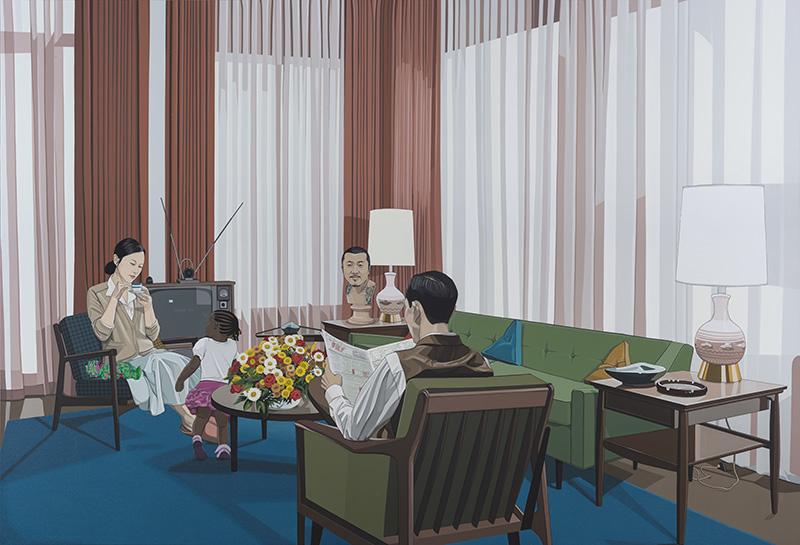
Chen Fei, National Conditions, 2017, acrylic on canvas

Chen Fei, Artist and family, 2018, acrylic on linen, Perrotin gallery

Chen Fei Portrait 2018, acrylic on linen

Chen Fei, The Road to Success, 2023-2024, acrylic, serigraphy and mixed techniques on canvas

Chen Fei
CHEN FEI is a contemporary Chinese artist, firmly rooted in his post-1980 generation. He is one of the so-called ultra-contemporary artists.
With cumulative sales of $5,930,250, he ranked 298th in Artprice's ranking of the Top 500 contemporary artists in the world, by auction turnover in 2023.
The auction company Artron has listed no less than 14 works by Chen Fei sold for a total of more than $5 million.
PROFILE OF THE ARTIST
Chen Fei was born in Hongtong, Shanxi Province, in 1983. He was trained at the Beijing Film Academy; he graduated from the Department of Fine Arts (2005). He lives and works in Beijing.
His extensive knowledge of cinema has influenced his choice of subjects and compositional style in his paintings. Chen Fei's narrative paintings are fantasy constructions, often perverted, transposing elements of his personal life into surreal or hyper-real pastiches. The artist unveils a disturbing universe imbued with sex and pop culture, in which he is one of the main protagonists. With photographic precision, Chen Fei's works appear to have been created by computer or taken from a cartoon. Yet they are actually acrylic canvases.
"He almost systematically exhibits his own figure in his work, satirically hijacking the age-old tradition of the self-portrait to revisit the canons of Eastern and Western art history. The highly graphic quality of his lively compositions, which he sees as still images, contrasts playfully with the refinement of his highly meticulous, detail-oriented style. More interested in the impact of China's rapid economic growth on its now globalised culture, Chen Fei also looks at his country's collective taste and the evolution of society.
In 2021, the Yuz Museum in Shanghai presented "Morning Market," Chen Fei's first solo exhibition in Shanghai, in the YUZ Project Space of Art. He was among the 21 Chinese artists exhibiting at Centre Pompidou in Paris in 2024-2025.
The Watari Museum of Contemporary Art in Tokyo presented "Chen Fei: Father and child" from July 3 to October 5, 2025. The exhibition featured 15 works by Chen Fei, created between 2022 and 2025, a monumental seven-meter fresco, installations and documents, presented in a unique and site-specific design. Drawing inspiration from the iconic German comic Vater und Sohn (Father and Son) as a starting point, the exhibition referenced a timeless publication created by the famous German illustrator E. O. Plauen (1903-1944), who was deeply affected during the Nazi era.
EXHIBITIONS
Chen Fei exhibits in major prestigious galleries abroad. After a presentation of the artist in Hong Kong in 2014 and in Paris in 2017, the Perrotin gallery organized a solo exhibition of Chen Fei in New York in 2019: "Reunion". It was his first major exhibition in America.
2025 "Le Grand Lobby" at Consortium, Dijon, "Chen Fei: Father and child", Watari Museum of Contemporary Art, Tokyo "Chen Fei: Father and child" ; 20121 "Morning Market," solo exhibition, Yuz Museum, Shanghai
Chen Fei participated in the group exhibition "China, a new generation of artists" at Centre Pompidou Paris in 2024-2025.
Chen Fei also participated in the group exhibition "Look at me" at the Perrotin gallery, Paris, in 2022.
PAST EXHIBITIONS
FANG LIJUN

Fang Lijun, Series 2 N°4, 1992, oil on canvas

Fang Lijun, 1995, oil on canvas, M+Sigg Collection, Hong Kong

Fang Lijun, wood block print, 1999
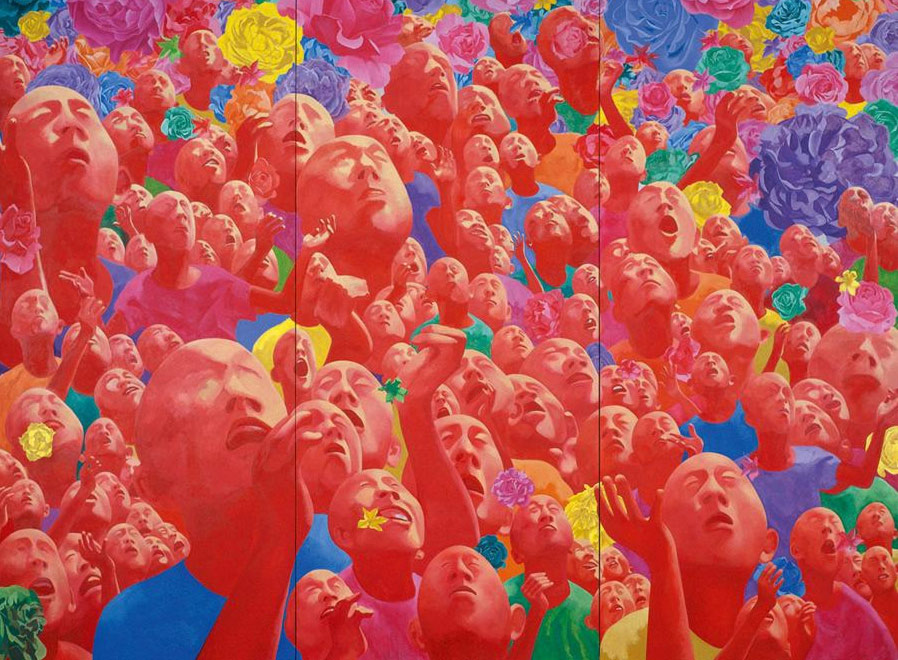
Fang Lijun, 2002.1.1, oil on canvas

Fang Lijun, sculptures, 2005, bronze

Fang Lijun, large painting, Today Art Museum, 2006, oil on canvas
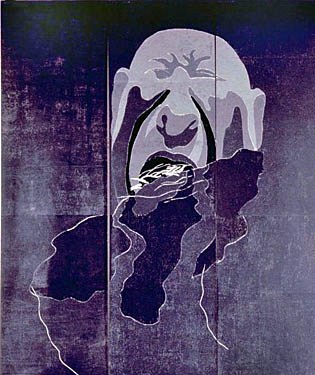
Fang-Lijun, wood block print, 2010

Fang Lijun, 2012-2013, oil on canvas

Fang Lijun, Bricks, Ceramics, Forbiden spaces, 2016, Musée Mariana

Fang Lijun, 2017, wood engraving on silk

Fang Lijun, painting, 2017, oil on canvas
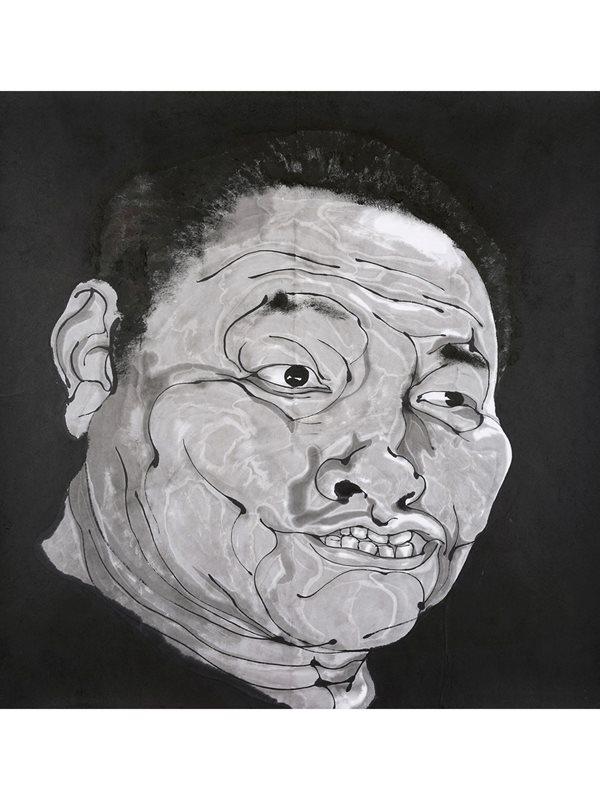
Fang Lijun, 2018, ink on paper
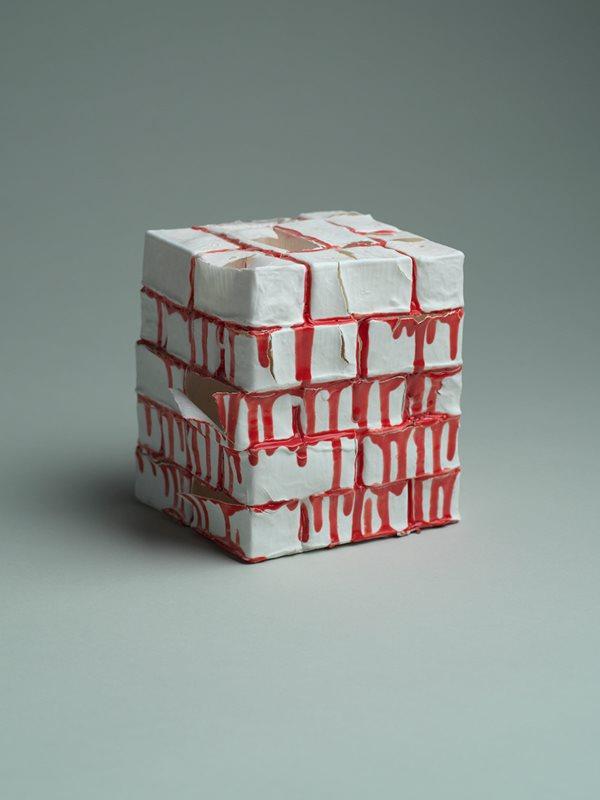
Fang Lijun, Small Draft, 2019, porcelain
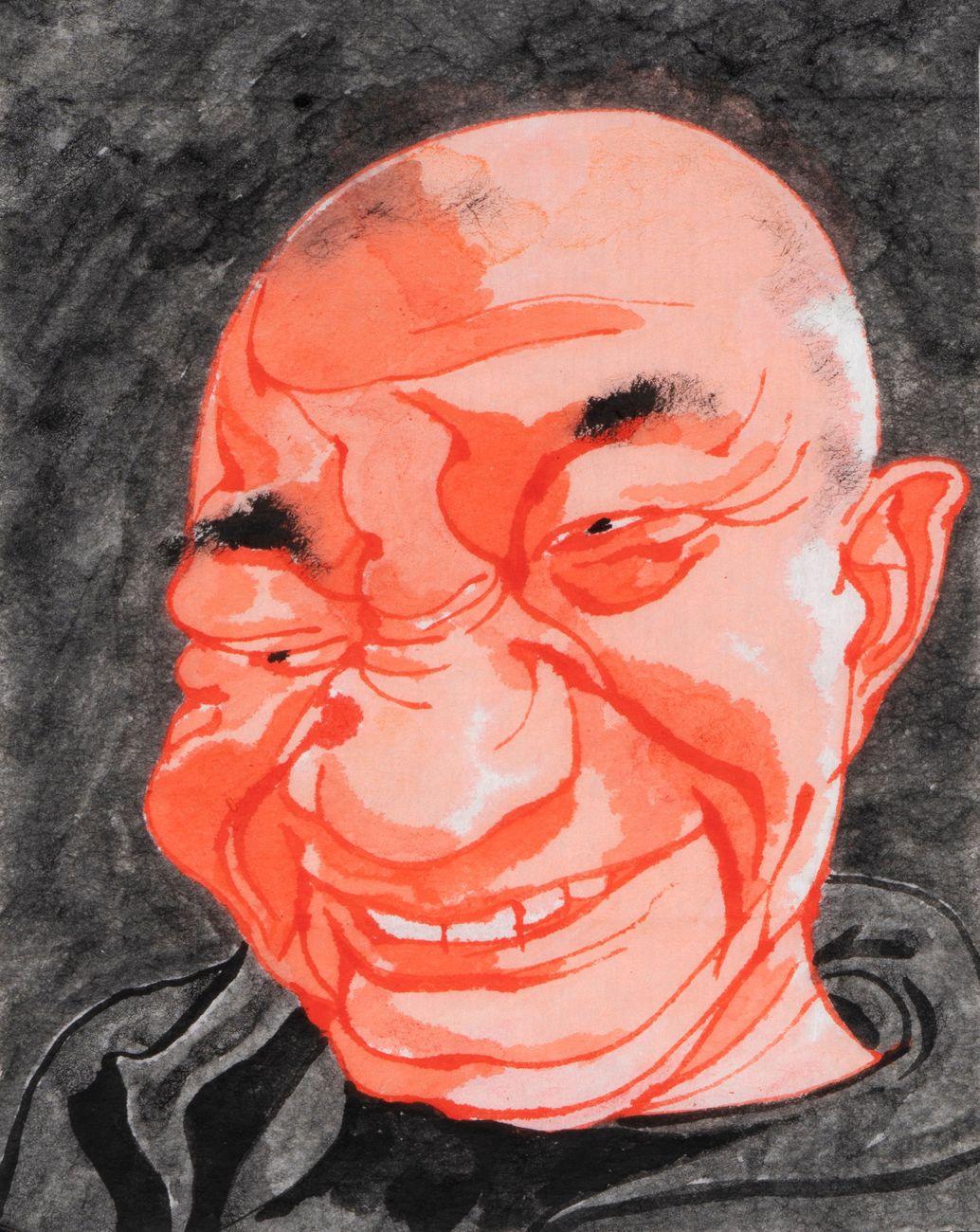
Fang Lijun, 2021.10.4, 2021, ink on paper
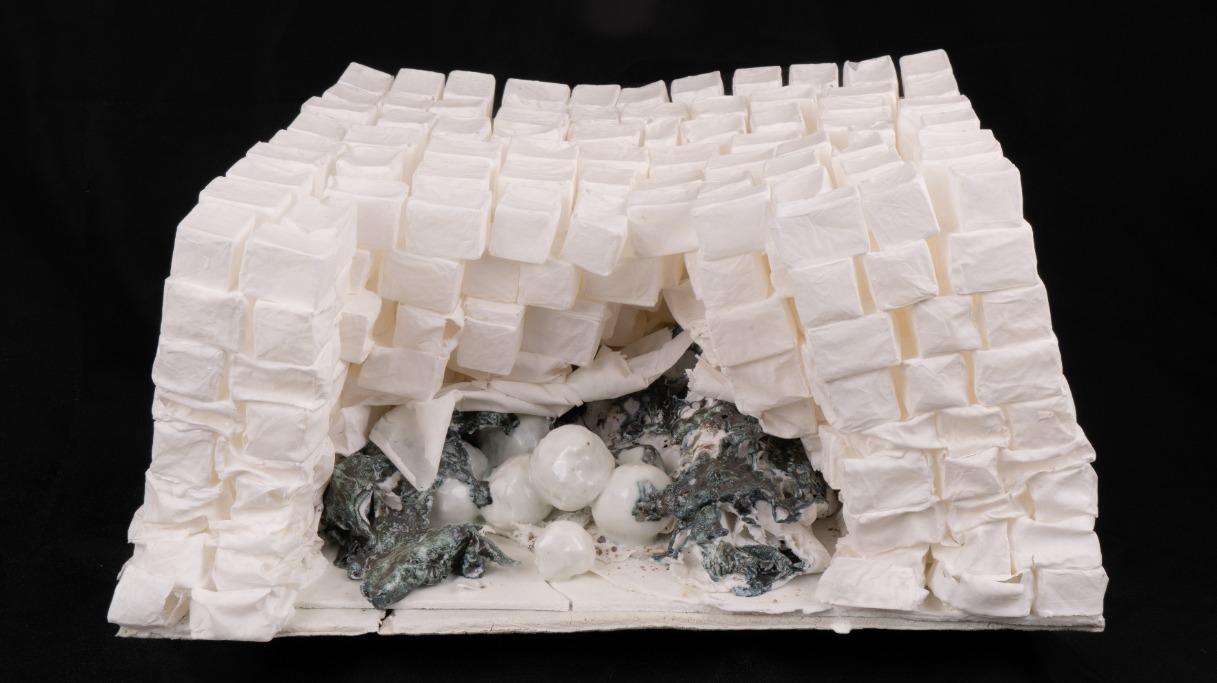
Fang Lijun, Ceramic, 2022, Sands gallery, Macao

Fang Lijun, 2013-2023.12.4, colored ink on paper

Fang Lijun, portraits, 2023, oil on canvas Triumph gallery Beijing

Fang Lijun
FANG LIJUN is a painter and printmaker who belongs to the younger generation of the Chinese contemporary avant-garde. He is also one of the initiators of the Chinese pictorial movement "Cynical Realism", which developed after the events of 4 June 1989 in Tiananmen Square. He is considered one of the most important figures in Chinese contemporary art.
Fang Lijun was ranked 7th in the Hurun China Art List 2023 with sales of $13.1m in 2023. With cumulative sales of $3,7 M, he ranked 385th in Artprice's Top 500 contemporary artists worldwide by auction revenue in 2023.
In October 2014, his “Series 2 N°4” sold at Sotheby's for HKD59.48 million ($7.63 million) in Hong Kong, its world record and double its estimate.
PROFILE OF THE ARTIST
Fang Lijun was born in Handan, Hebei province, in 1963. He graduated from the Beijing Academy of Fine Arts (1989). He also studied ceramics at the Hebei Light Industry Technical College. He currently lives in Tongxian, east of Beijing and in Yunnan province.
Fang Lijun's trademark image is a bald Chinese man with yellow or pink skin, a puffy face and thick features.
Fang Lijun began exhibiting his work in 1989, with the help of his childhood friend and critic Li Xiantang. His paintings were shown at the China/Avant-garde Exhibition, alongside those of other emerging artists from the Cultural Revolution. Following this exhibition, and thanks in part to his friend Li Xintang, his career took off.
After creating the bald young men in his 1988 Series, Fang Minjun began to paint these figures in different poses - yawning, then smiling - as a reflection of the changes Chinese society was undergoing at the time. In 1993, his work Series 2, N° 2 (1991-1992), commonly known as “The Yawn” or “The Howl”, had the honor of appearing on the cover of the New York Times Magazine, giving Fang Lijun an international reputation. That same year, he was selected to exhibit at the 45th Venice Biennale and again at the 1999 Biennale.
After a trip to Norway in 1995, Fang Lijun adopted Edvard Munch's technique of cutting wooden blocks into pieces, inking them separately in different colors, then reassembling them for printing. With seven contiguous thirteen-foot vertical rollers, he thus created a woodcut mural (2003.2.1).
2005.1.10 (Lot 1447) is a group of thirty-six bronze sculptures that mark Fang Lijun's transition from painting and engraving to sculpture. Each sculpture retains Fang Lijun's famous bald, self-portrait style, their bodies and faces having been deliberately distorted.
From November 11, 2016 to April 2, 2017, the Musée Ariana in Geneva was showing Fang Lijun's ceramic installations, which are less well known than his paintings. “The artist starts with small polystyrene bricks, which he coats with porcelain and stacks one on top of the other. When fired, the polystyrene disappears, leaving only the ceramic structure. For several years now, in Jingdezhen, the birthplace of porcelain, the artist has been developing research that has led to the evolution of his sculpture and ceramics.
Fang Lijun's exhibition “Art History Of Fang Lijun' at the Beijing Minsheng Art Museum, from October 29 to November 29, 2017, presented the artist's artistic career over three decades with the emblematic ‘Bald Heads’ series and his latest collections, installations and sculptures.
In 2023, the exhibition “Between Perfection and Destruction: Fang Lijun Porcelain Sculpture” at Eskenazi Gallery in London, showcased nine porcelain sculptures - diaphanous, stacked modular constructions - that explore Fang Lijun's interest in the state of flux between perfection and destruction. These were accompanied by preparatory ink sketches. In 2024, the Asmoleum Museum in Oxford presented a major exhibition, “Fang Lijun, Portraits and Porcelains”.
https://www.instagram.com/fang_lijun_studio/
In his exhibition, “Look on, Near and Far,” at the Triumph gallery in Beijing, in 2024, the artist presented both ceramics and portraits.
EXHIBITIONS
Fang Lijun's first solo exhibition "Human Images in an Uncertain Age", was hosted in Tokyo in 1996 by the Japan Foundation Asia Center, making him the first contemporary Chinese artist to have a solo exhibition abroad.
The artist's most recent solo exhibitions include: 2024 "Look on, Near and Far," Triumph gallery, Beijing, Fang Lijun, Portraits and Porcelains, Asmoleum Museum, Oxford, UK; 2023 Between Perfection and Destruction: Fang Lijun Porcelain Sculpture, ESKENAZI, London, Fang Lijun Ceramic Works Exhibition, Sand Gallery, Level 6, The Grand Suites at Four Seasons, Macao, China, Fang Lijun: The Light of Dust(A Luz Poeirenta), Macao Museum of Art, Macao, China ; 2022 Wonderland - FANG LIJUN Ink painting, Xi'an Art Museum, Xi'an, China.
Fang Lijun was one of the artists selected for the major exhibition 'Art and China' after 1989, Theater of the World', at the Guggenheim Museum in New York (Oct 6, 2017 - Jan 7, 2018).
PAST EXHIBITIONS
YUE MINJUN

Yue Minjun, The Execution, 1995, oil on canvas

Yue Minjun, bronzes, 1999, Venice Biennale

Memory-2, 2000, oil on canvas, Collection of the artist, Beijing

Yue Minjun, Fighting, 20O2, oil on canvas

Yue Minjun, Hat series, 2005, oil on canvas

Yue Minjun, Overlapping Series 2012, oil on canvas

Yue Minjun, Eudaimonia, Exhibition, 2022, Tang Contemporary Art Beijing

Yue Minjun, Picasso and I, 2022, Tang Contemporary Art Beijing

Yue Minjun, Flowers Series, Garden of Smiles exhibition, 2024, Heydar Aliyev Center Baku Azerbaijan

Yue Minjun, Garden of Smiles exhibition, 2024, Heydar Aliyev Center, Baku, Azerbaijan

Yue Minjun, Human and a Pharaon, Bitcoin Series, 2024

Yue Minjun,
YUE MINJUN is a contemporary Chinese artist. He is best known for his paintings depicting himself in various settings, frozen in a hilarious grin. This image has become his signature, his logo, which he has reproduced in sculpture, watercolour and engraving. He is often associated with the "Cynical Realism" artistic movement that developed in China after 1989, but Yue Minjun rejects this label. He asserts his position as an independent artist.
In 2007, Yue Minjun's oil painting "Execution" (1995) was the most expensive work of art in the history of Chinese contemporary art, selling for €3.7 million at Sotheby's.
Yue Minjun was ranked 1076th in the top 5000 of the world's best-selling artists at auction, with a turnover of €908K in 2023. He was ranked 44th in the Hurun China Art List 2023, with a turnover of $2.160m.
https://www.instagram.com/yueminjun001/?hl=fr
PROFILE OF THE ARTIST
Yue Minjun was born in 1962 in Heilongjiang province. He started out as an amateur painter, before studying art at the Hebei Provincial Normal School from 1985 to 1989. He now lives in the village of Songzhuang on the outskirts of Beijing.
It was in the artists' community of the village of Yuanmingyuan, near Beijing, in the early 1990s, that Yue Minjun began to define his style and the contours of his main subject: laughter. In 1989, he had a revelation when he saw the laughing face of the painter Geng Jianyi exhibited in Beijing.
In the 2000s, Yue Minjun fed her style with multiple influences and developed new series such as Labyrinths, Re-portraits and Overlappings (2012). Over the years, his style has developed, with the artist often questioning social and cultural conventions, even dealing with political issues in a radical and abstract way. His self-portraits have been described by the theoretician Li Xianting as "a self-ironic reaction to the spiritual emptiness and madness of modern China".
His attachment to self-portraits stems from a simple idea, which he explains: "as I wanted to become a star painter quickly, I told myself that the best way to make myself known was to circulate my portrait as widely as possible. Then I realised that by systematically reproducing my face, I could get a lot of things across through the consistency of this image". He continues: "As I paint bursts of laughter, and therefore wide-open mouths, I'm obliged to fill them with rows of teeth. On the other hand, as I'm looking for a strong visual effect, the multiplication of these teeth, all very white, gives a striking image. It's similar to the close-up technique used in cinema, with the punch effect it creates. When we look at the experience of life on the one hand, with all its suffering, and on the other, at what could be the ideal existence to which everyone aspires, we realise that absurdity prevails. And the only way to cope with this discrepancy is to laugh about it. That's why smiling, laughing to hide your powerlessness, is so important to my generation," writes Yue Minjun.
In his painting "The Execution" (1995), inspired by Édouard Manet's The Death of Emperor Maximilian of Mexico (1868), all the protagonists are replaced by smiling figures, with a direct reference to the Forbidden City in the background. Similarly, in the series on the question of absence in the image, he reproduces identical paintings by the great masters of Western and Chinese painting, stripping them of all their characters. All that remains is the background, a veritable stage set revealing lunar landscapes and astonishing architecture. Invited to take part in the Venice Biennale in 1999, he chose to make bronzes of his self-portrait, parodying the terracotta sculpture of the army of the Qin dynasty. This dazzling coup opened the doors of the international art market to him.
From 30 March to 18 April 2017, the Lu Xun Academy of Fine Arts Museum (Shenyang, China), devoted a major solo exhibition to Yue Minjun, "Out of the Maze - Yue Minjun Solo Exhibition". It brought together no fewer than 61 paintings by the artist, 11 manuscripts and 15 sculptures, covering almost all of her series created in recent years.
On 13 July 2017, Vancouver Biennial hosted 'Day of Laughter' at Morton Park (English Bay), to honour Yue Minjun, the man behind one of the city's most iconic public art installations - Amazing Laughter - consisting of 14 bronze sculptures, giant smiling men, sporting Minjun's smiling face.
In his exhibition Eudaimonia (Beatitude) in 2023, Yue Minjun sought to underline the importance of the feeling of life through pictorial narratives, which was also reflected in his "Flower" series.
In May 2024, Yue Minjun was the first major contemporary artist to embrace the Bitcoin blockchain with a first-ever Ordinals collection "Human".
EXHIBITIONS
Yue Minjun's solo exhibitions include: 2024 "Garden of Grins", Heydar Aliyev Center, Baku, Azerbaijan ; 2023, Yue Minjun, Tang Contemporary Art, Seoul; 2022-2023 Yue Minjun, Eudaimonia, Tang Contemporary Art, Beijing; 2022 Chinese Contemporary - Yue Minjun "Smile-ism" Tribute, "Smile at the Flower Sermon", Tang Contemporary Art, Hong Kong, 2022 "Yue Minjun in Gwangju", Gwangju Art Museum, Gwangju, Korea ; 2020 “Yue Minjun, A-Maze-ing Laughter of Our Times!”, Seoul Arts Center ; 2017 "PrimaryForm in Re-Idol': Yue Minjun", Hubei Museum of Art, China, “Out of the Maze – Yue Minjun Solo Exhibition”, Lu Xun Academy of Fine Arts Museum, Chine ; en 2014, 'Yue Minjun, Neo Idolatry', Macau Museum ; en 2013, Yue Minjun, Galerie Templon, Paris.
Yue Minjun was one of the artists selected for the major exhibition 'Art and China' after 1989, Theater of the World', at the Guggenheim Museum in New York (Oct 6, 2017 - Jan 7, 2018).
Yue Minjun has participated in the 7th Shanghai Biennale, and other group exhibitions such as the 2017 Vancouver Biennale.
Yue Minjun had an exhibition at the Fondation Cartier in Paris in 2012.
PAST EXHIBITIONS
CUI RUZHUO
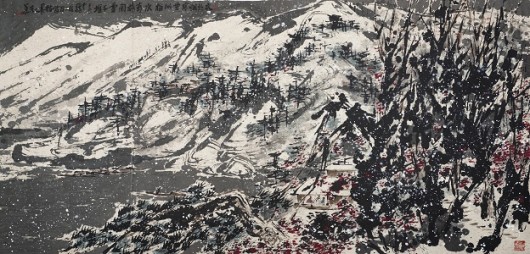
Cui Ruzhuo, Snowy mountain, 2006, ink on paper

Cui Ruzhuo, Finger painting of landscape, 2008, ink on paper

Cui Ruzhuo, Sounds of spring, 2010, ink and colour on paper

Cui Ruzhuo, The Grand Snowing Mountainous Jiangnan Landscape, 2013, ink and colour on paper

Cui Ruzhuo, Twelve screens of Finger Ink Landscape, 2017, ink and coolour on paper
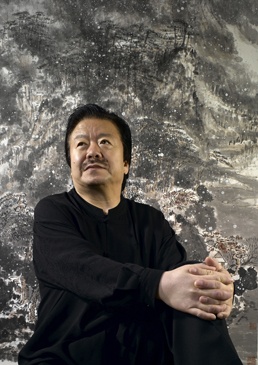
Cui Ruzhuo
CUI RUZHUO is a Chinese painter renowned in his homeland for his ink paintings. The artist creates contemporary works while renewing the great Chinese tradition. He is best known for his majestic snow-covered landscapes, in a style very close to traditional Chinese art, and for his washes of mountains and lakes.
Cui Ruzhuo has been selling more and more, and is one of the top-selling artists in China, selling at high prices. In 2017, he sold a work 'Twelve Screens of Finger Ink Landscape' which fetched $35.7m (RMB 241m) at a Poly China HK auction. On 3 April 2016, Poly Auction Hong Kong sold a work by Cui Ruzhuo entitled "The Grand Snowing Mountains" (2013) for $36.6 million, a record for the auction house.
Cui Ruzhuo ranked second on the Hurun China Art List in 2023, with a turnover of US$16.6m. He ranked 59th in the Artprice rankings (auction sales revenue) in 2023, with a turnover of $33,761,070.
PROFILE OF THE ARTIST
Cui Ruzhuo was born in Beijing in 1944. As a child, he studied Chinese calligraphy and then painting with the painter Li Kuchan, one of the masters of traditional Chinese ink painting. He went on to teach at the Academy of Arts and Design in Beijing until he left for the United States in 1981. He was awarded an honorary doctorate in art by Dewey College in New York in 1984.
Cui Ruzhuo has now returned to his homeland, where he trains doctoral students at the Chinese National Academy of Arts.
Using Indian ink on paper, Cui Ruzhuo paints pictures inspired by the great classical Chinese masters, from which emanate great serenity. For over 10 years, he has specialised in "finger painting" (using the fingers as brushes and traditional Chinese rice paper as a support), a style of painting that could be seen in the Qing dynasty. He is very well known in China for his majestic snowy landscapes, in a style very close to traditional Chinese art, for his washes of mountains and lakes.
In April 2018, Cui Ruzhuo presented his exhibition entitled "Glossiness of Uncarved Jade", and a collection of "Paintings of Arhat" by Shi Tao (a Chinese painter from the early Qing dynasty) at the Liu Haisu Museum of Art, in Shanghai. The exhibition brought together around a hundred works by the artist, highlighting his talents as an ink wash painter.
EXHIBITIONS
Cui Ruzhuo's recent solo exhibitions include: 2021 "Glossiness of Uncarved Jade: Grand Exhibition of Cui Ruzhuo" in Macao Museum; 2018 "Glossiness of Uncarved Jade", Liu Haisu Art Museum, Shanghai; in October 2016 'Cui Ruzhuo: Glossiness of Uncarved Jade' in Moscow and in Saint Petersburg in September 2016. A major exhibition 'Cui Ruzhuo's 'finger-ink' show' was presented at the Palace Museum in Beijing from March to June 2016.
Cui Ruzhuo is passionate about Chinese art and is also a great collector. He has owned a museum in Beijing since 2007, and another in Ito, Japan, the first Chinese museum in Japan.
LIU WEI

Liu Wei, Love it, Bite it, 2005, made from edible dog chews

Liu Wei, Trilogy, sculpture, 2011, Minsheng Art Museum, Shanghai

Liu Wei Library, 2012, Books, wood, iron, Pinault Collection

Liu Wei, Liberation-No1 500, 2013

Liu Wei, Microworld, Venice Biennale 2019, Arsenal Corderie

Liu Wei, Devourment, 2019, Aluminum plate, cement, wood, resin, and gypsum biennale art venise

Liu Wei, Invisible cities, Moca Cleveland, 2020-2, White Cube gallery

Liu Wei, Dimension 21, 2021, aluminium and car paint
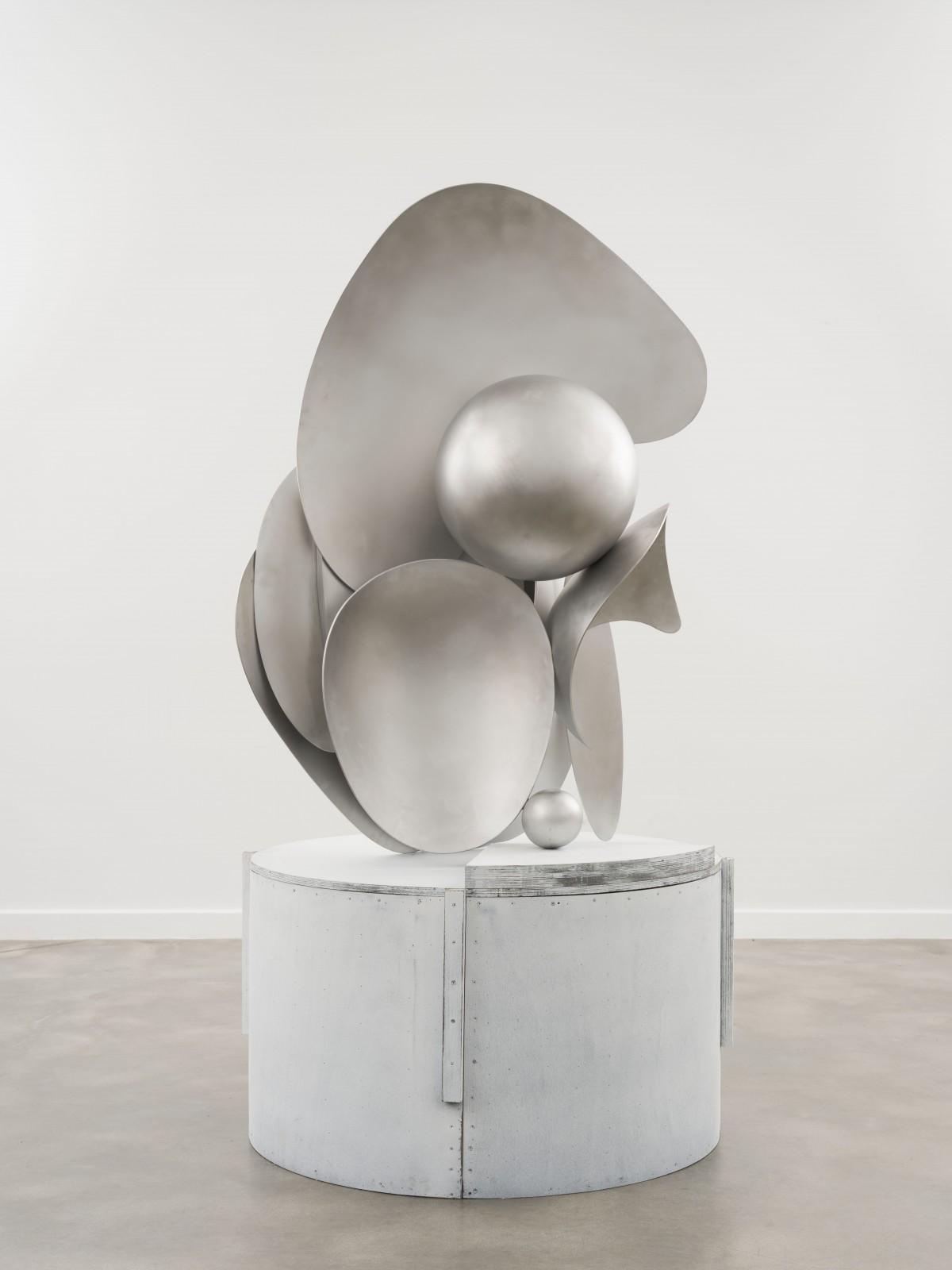
Liu Wei, Microworld N 9, 2022, aluminium, wood and steel, White Cube Gallery
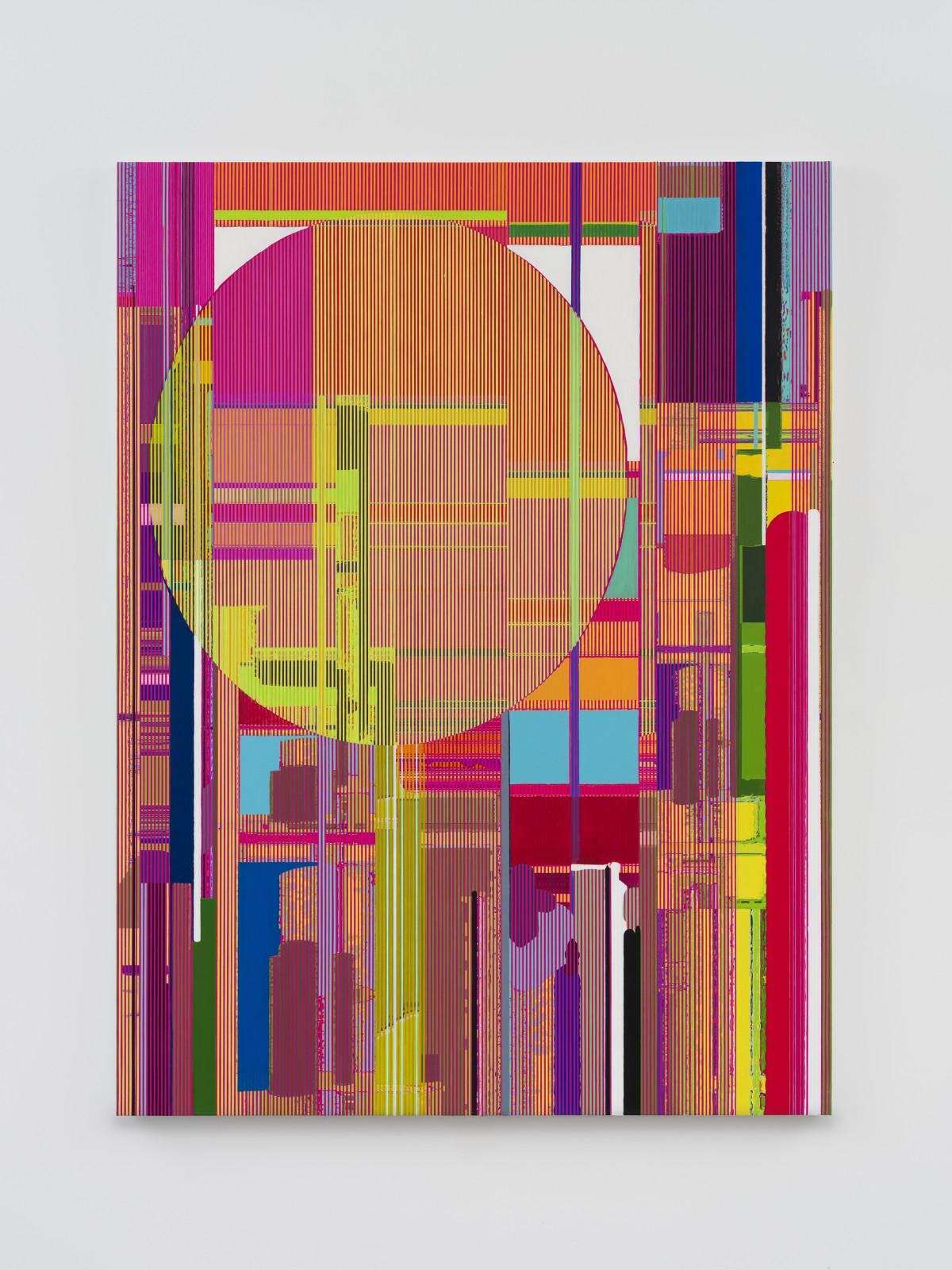
Liu Wei, Untitled 2 2022, medium-res, White Cube Gallery
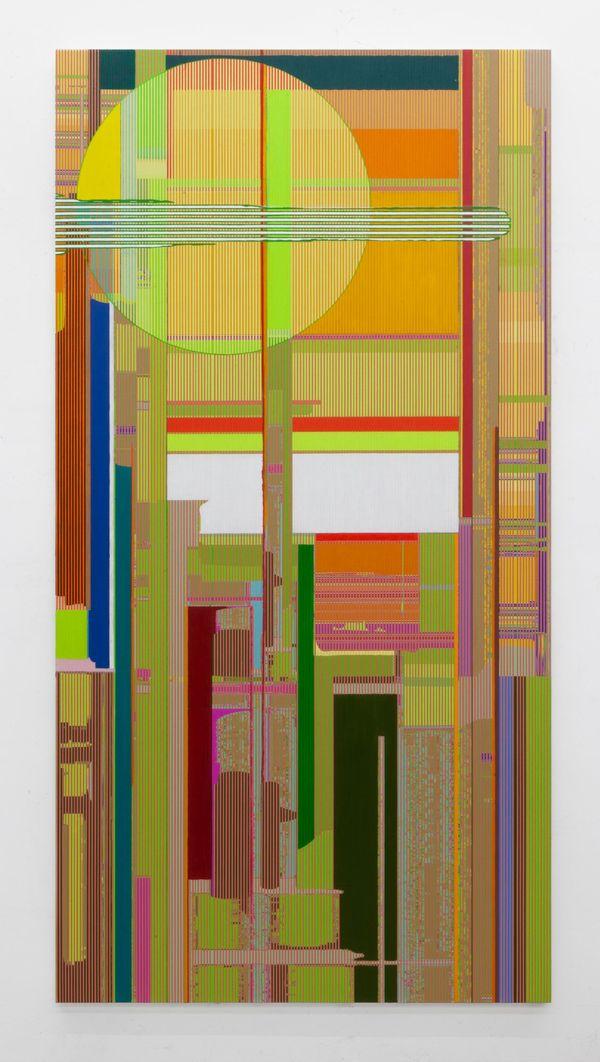
Liu Wei, Untitled 3, 2022, oil on canvas, White Cube Gallery

Liu Wei, sculpture, Immersive Art Gallery, Art021 Shanghai 2024, photo Cathy Fan

Liu Wei
LIU WEI is a visual artist who uses a variety of media: video, installations, drawing, sculpture and painting. He is considered one of the most talented artists in China's contemporary art scene. Liu Wei explores the contradictions of contemporary society and the transformations of cities and the urban landscape. In 1999, he was part of a group of subversive artists known as the Post-Sense Sensibility Group.
"Liu Wei is one of the greatest artists of his generation," says Michelle Yun, curator at New York's Asia Society Museum. "He is able to be present on the art scene within China as well as internationally.
On 16 May 2016 in Beijing, the Award of Art of China (AAC) was presented to Liu Wei.
He ranked 10th in the Hurun China Art List 2023, with sales of $12.1m. With cumulative sales of $4,745,690, he ranked 359th in Artprice's ranking of the world art market in 2023.
PROFILE OF THE ARTIST
Liu Wei was born in 1972 in Beijing, where he currently lives. He graduated from the China Academy of Art in Hangzhou in 1996.
The rapid urbanisation of the post-Mao period has greatly influenced Liu Wei's art. Since 2006, his work has focused on corruption, alienation and the immense verticality of a megacity's infrastructure. Liu Wei declares: "Cities are a reality; all of China is a city under construction and of course this influences me". Liu Wei's city has no history, and in this city a person can only experience "the chaotic present". In 2015, in an exhibition at the White Cube in Hong Kong, he presented paintings, sculptures and videos in which he used shiny materials such as mirrors and polished steel, creating a certain architectural space through their refraction while destabilising the viewers' perception.
His work 'Indigestion' (2004) was a two-metre pile of tar, a petrochemical residue. His work 'Love it! Bite it!" (2005) depicted an urban scene with miniature buildings made of pieces of dried intestines, as found in dog shops, as well as in his work "Don't Touch". Liu Wei was surprised by the response to his work and the focus on the aesthetics of the buildings, which are above all symbols of power.
Liu Wei has also produced a series of art products that are in fact everyday objects. His Art Series such as "Anti-Matter" (2006) and "As Long as I See It" (2006) is made up of household objects such as washing machines, fans and televisions. In 2013 he produced a series of mugs for the Illy Collection (Netherlands) featuring images of stylised skyscrapers.
From 5 May to 16 June 2018, the Sean Kelly Gallery in New York presented "180 Faces". Comprising 180 unique 'portraits' of anonymous individuals, these paintings - in small format - draw on a range of the artist's influences, from Chinese calligraphy to expressionism, but above all Liu Wei is here making an extraordinary foray into completely new territory, that of portraiture. Placed inside white acrylic frames, each face presents itself "between familiarity and obscurity, between liveliness and death". Liu Wei's use of charcoal dismantles the portrait genre. The barely recognisable expressions and wise impressions of the figures, sometimes behind broken glasses, require both attention and distance from the viewer, making it difficult to internalise or empathise with their personal narratives.
In his last exhibition at White Cube Gallery in 2022-2023, Liu Wei explored the possibilities offered by digital processes and how they can be translated and adapted to the medium of painting, developing his long-term use of digital software to deconstruct, reorganise and reinterpret an image.
EXHIBITIONS
Liu Wei's first solo exhibition was organised by the Courtyard Gallery in Beijing in 2005. To date, the artist's largest exhibition was held at the Ullens Centre for Contemporary Art in February 2015.
Liu Wei's most recent solo exhibitions include: 2024-2025 “Liberation Routes”, CC Shanghai Foundation ; 2022 White Cube, West Palm Beach, Florida; 2021 Nuditá, White Cube Bermondsey, London; 2020 Over, Long Museum, Shanghai; 2019 Liu Wei: Invisible Cities, Museum of Contemporary Art Cleveland, Ohio; Cleveland Museum of Art, Ohio.
Liu Wei has taken part in numerous group exhibitions, the most recent being en 2024 : 2024 ART021 Shanghai, JANUS, Palazzo Diedo, Berggruen Arts & Culture, Venise, Italie.
A work by Liu Wei "Library III" is exhibited at the Pinault Foundation, Bourse du Commerce in Paris since February 2024.
PAST EXHIBITIONS
AI WEIWEI

Ai Weiwei, Bird Nest, Olympic Games 2008

Ai Weiwei, Porcelain Cube, 2009, Jingdezhen porcelain
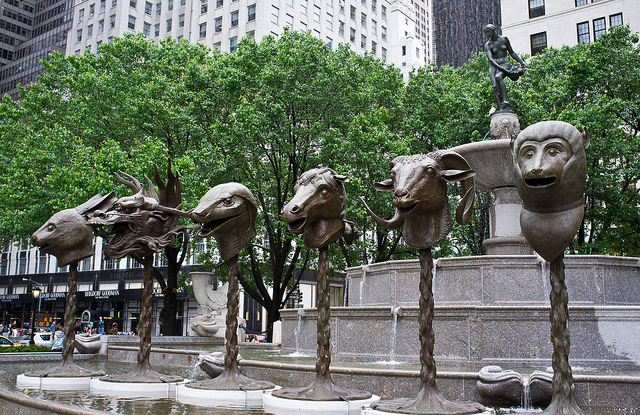
Ai Weiwei, Circles of Animals, 2010, bronze
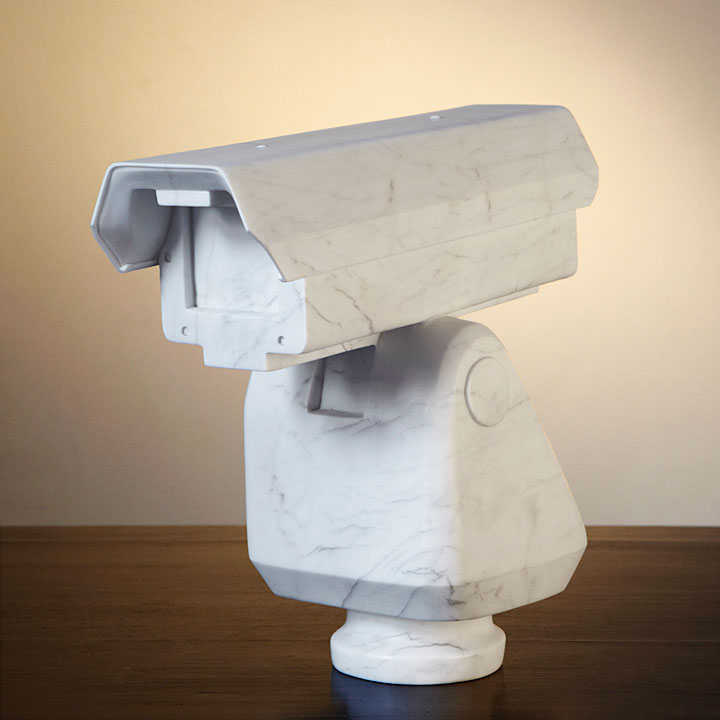
Ai Weiwei, security camera, 2010, marble

Ai Weiwei, Sunflower seeds, 2010, porcelain, Tate Modern

Ai Weiwei, With Passport, Bon Marché Janvier 2016, bamboo, silk

Ai Weiwei, Law of the Journey, installation, Prague, 2017, caoutchouc

Ai Weiwei, ‘Stacked Porcelain Vases as a Pillar’, 2017, porcelaine, Photo © Ai Weiwei Studio
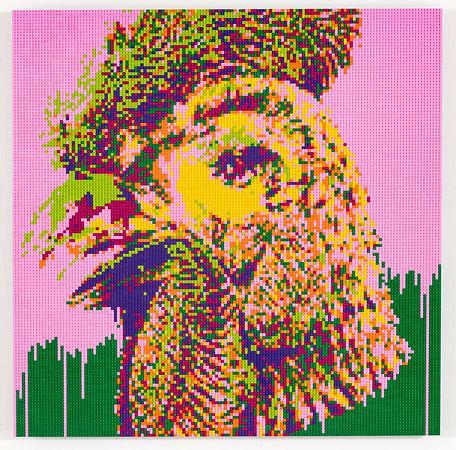
Ai Weiwei, Chicken, 2018, Briques Legos

Ai Weiwei, Sleeping venus with coat hanger, 2022, briques lego montées sur aluminium
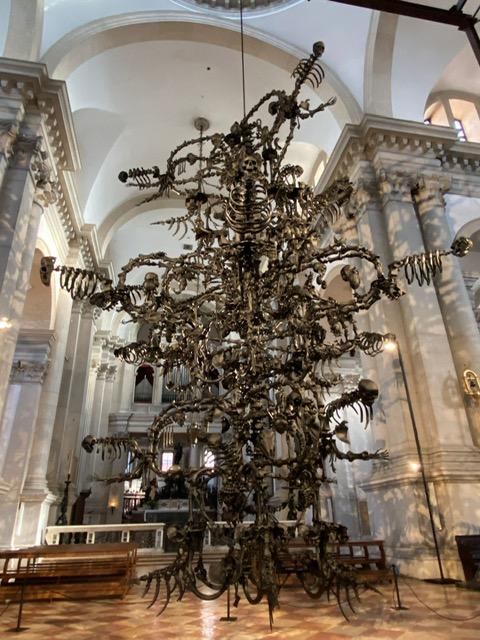
Ai Weiwei, Comedia, Venice Exhibition San Georgio, 2022, verre noir de Murano

Ai Weiwei, Comedia, Venice Biennale, Exposition, San Georgio, 2022, verre blanc de Murano

Ai Weiwei, Water Lilies, 2022, briques lego

Ai Weiwei, Executions after Goya, Don Qixote, Museo de Arte Contemporáneo de Castilla y León (MUSAC) 2025, briques lego

Ai Weiwei, Surfing, after Hokusai, 2024, lego bricks

Ai Weiwei
AI WEIWEI is one of the leading Chinese artists, working on the internationa art scene, a sculptor, performer, photographer, architect, curator, film-maker and blogger. He is both an artist and a social critic, with a prolific, iconoclastic and provocative body of work. He tackles head-on the question of social conditions in China and other countries, bearing witness to the upheavals in his country. He was one of 303 Chinese intellectuals to sign the manifesto, "Charter 08", on 10 December 2008.
In February 2015, his bronze sculptures representing the heads of the Zodiac were sold by Phillips in London for around $4.4 million.
At Frieze Seoul in September 2024, Tang Contemporary Art sold a bronze casting by Ai Weiwei for $450,000, and one of the artist’s “Lego Brick” works for $140,000–$160,000.
Ai Weiwei was ranked 1442nd in the top 5000 of the world's best-selling artists at auction (Turnover 2023).
NEWS
The Seattle Asia Art Museum is presenting "Water Lilies" from March 19, 2025 to March 19, 2026.
ARTIST PROFILE
Ai Weiwei was born in Beijing in 1957. In 1978, he was accepted at the Beijing Film University. In 1979, he and others founded the avant-garde contemporary art group “Les Étoiles”. In 1981, thanks to a network of contacts, he moved to the United States, mainly New York, where he studied at the Parsons School of Design. In 1993, his father fell ill and Ai Weiwei moved back to Beijing. In 2011, he spent 81 days in detention after being arrested at Beijing airport as he was about to board a plane for Hong Kong. He was released on bail on June 22, 2011 and placed under house arrest, accused of tax fraud, stripped of his passport and banned from holding exhibitions. His studio in the suburbs of Shanghai was demolished in January of the same year. He left China in July 2015; in August 2018, he announced that his Beijing studio had been destroyed by the Chinese authorities. After living in Germany and the UK, he now lives in Portugal.
In the early 1980s, Ai Weiwei chose New York as his field of expression, photographing the world around him on a daily basis. He launched performance art and created conceptual art. He continued this practice in Beijing, where he returned in 1993, showing the multiple aspects of China's urban and social reality. His name came to prominence recently with projects such as the “Bird's Nest” - the Olympic stadium built for the 2008 Summer Olympics - for which he was artistic advisor to the Swiss architecture firm Herzog & de Meuron.
In 2007, Ai Weiwei was invited to take part in documenta 12, one of the world's most important exhibitions of modern and contemporary art, held in Kassel, Germany, every five years.
Since 1994, Ai Weiwei has been creating sculptures based on iconic Chinese objects: bicycles, porcelain vases and furniture from the Qing dynasty, between tradition and modernity. In May 2011, a well-known work by the artist, “Circle of Animals/Zodiac Heads” - 12 bronze sculptures representing the animals of the Chinese zodiac - was exhibited in front of the Pulitzer Fountain on Grand Army Plaza in New York City. The “Sunflower Seeds” installation was presented as part of the “Unilever Series”, from October 10 2010 to May 2 2011, at London's Tate Modern Museum. The work was made up of several million porcelain sunflower seeds, playing on Mao Zedong's famous metaphor that the Chinese people should turn to him like sunflowers to the sun. In 2017, Ai Weiwei built over 100 palisades around NYC - including 10 inside the city - a multi-site entitled “Good Fences Make Good Neighbors”. These were on view from October 12, 2017 to February 11, 2018. With these installations, the artist wanted to explore the trend towards and effects of borders currently being erected in society.
Ai Weiwei currently devotes much of his time to dealing with the sensitive subject of refugees around the world. In 2017 he made a documentary film entitled “Human Flow”. He visited over 40 refugee camps in 23 countries to make this first feature-length film. The film focuses on several trajectories of suffering men and women around the world. The film was shortlisted for the 2018 Oscars, among 170 documentaries.
A major retrospective exhibition “Ai Weiwei libero” was held at the Palazzo Strozzi in Florence from September 23, 2016 to January 22, 2017. In conjunction with the exhibition, Ai Weiwei had hung an installation called “Reframe” consisting of 22 rubber dinghies on the façade of Palazzo Strozzi. The aim was to draw attention to the plight of refugees in the Mediterranean.
In 2022, on the island of San Gorgio Magiorre, as part of the Venice Biennale, Ai Weiwei presented a huge and impressive chandelier made of black Murano glass in the basilica.
Since the end of the 2000s, Ai Weiwei has made Lego an integral part of his artistic vocabulary. In 2022, again as part of the 59th Venice Biennale, he presented an exhibition of Lego-paintings reproducing famous paintings and some of his own works. In April 2023, at the Design Museum in London, Ai Weiwei presented his largest-ever work in Lego bricks, recomposing Monet's Water Lilies with 650,000 colorful pieces; at the Museo de Arte Contemporáneo de Castilla y León (MUSAC) in Spain, from November 9, 2024 to May 18, 2025, he presented “Don Quixote”, LEGO paintings, including a contemporary version of Goya's famous painting “May 3 in Madrid” (or “The Executions”).
From 21 September 2024 to 4 May 2025, Palazzo Fava in Bologna, Italy, is hosting an exhibition by Ai Weiwei, entitled ‘Ai Weiwei. Who am I?' The exhibition was inspired by a dialogue between the artist and an artificial intelligence, highlighting Ai Weiwei's conflict between tradition and innovation. With over fifty works on display, including installations, sculptures, videos and photographs, the artist invited visitors to explore universal themes such as freedom of expression, human rights, migration and geopolitical crises.
Ai Weiwei is set to present a new painting in Kiev, in support of the war in Ukraine, titled "Three Perfectly Proportioned Spheres and Camouflage Uniforms Painted White." It will be on display at Pavilion 13, from September 14 to November 10, 2025. According to the release, the work will resemble the sphere-like icosahedron sculptures of his "Divina Proportione" series (2004–12), which was inspired by Leonardo da Vinci's mathematical illustrations.
Ai Weiwei had a retrospective "Ai, Rebel: The Art and Activism of Ai Weiwei" at the Seattle Art Museum, USA, from March 12 to September 16, 2025.
https://www.instagram.com/reel/DQZ61O4jZH9/?igsh=NzI1b3BldjZ1eDF1
Ai Weiwei presented a new painting in Kyiv, in support of the war in Ukraine, titled 'Three Perfectly Proportioned Spheres and Camouflage Uniforms Painted White.' It was on display at Pavilion 13 from September 14 to November 10, 2025.
EXHIBITIONS
Since the beginning of his career, Ai Weiwei has had numerous solo exhibitions and has taken part in over 150 group exhibitions, notably in the United States, Belgium, Italy, Germany, France, Spain, Australia, China, Korea and Japan.
Ai Weiwei's recent solo exhibitions include: 2025 “Ai Weiwei: A New Chapter”, Lisson gallery, London ; 2024-2025 ‘Ai Weiwei. Who am I?', Palazzo Fava in Bologna, Italy, "Don Quichotte", Museum of Contemporary Art in Castilla y León (MUSAC), Spain ; 2024 Galeria de Antiguidades e Arte São Roque, Portugal ; Ai Weiwei - Neither Nor exhibition view Galleria Continua San Gimignano, Italy; 2023-2024 "Ai weiwei, In Search of Humanity", Kunsthal, Rotterdam, Netherlands; 2023 Ai Weiwei, Tang Contemporary Art, Seoul.
Ai Weiwei participated in India Art Fair 2025 (6-9 February), presented by Galleria Continua.
Ai Weiwei: Entrelacs” was the artist's first major solo exhibition in France, at the Musée du Jeu de Paume in Paris, in 2012.
Ai Weiwei took over the estate of the former Habsburg summer residence in Bad Ischl, Austria, from September 9 to October 27, 2024.
In 2022, Ai Weiwei presented a new Murano glass installation in Venice as part of the 59th Biennale, as well as an exhibition of painting-lego.
Invited to exhibit at Paris department store Le Bon Marché in January 2016, Ai Weiwei created a series of magnificent window displays featuring symbols and light materials such as bamboo and sisal, plus a “Childplay” exhibition inside the store featuring kites, fabulous birds and dragons.
PAST EXHIBITIONS
ZHANG XIAOGANG

Zhang Xiaogang, Bloodline Three Comrades, 1994, oil on canvas

Xhang Xiaogang, Amnesia and Memory, 2001, oil on canvas

Zhang Xiaogang, My Memory N°2, screenprint in colors on paper signed and numbered 60/99

Zhang Xiaogang, Big Family N°9, 2003, Lithograph printed in colors
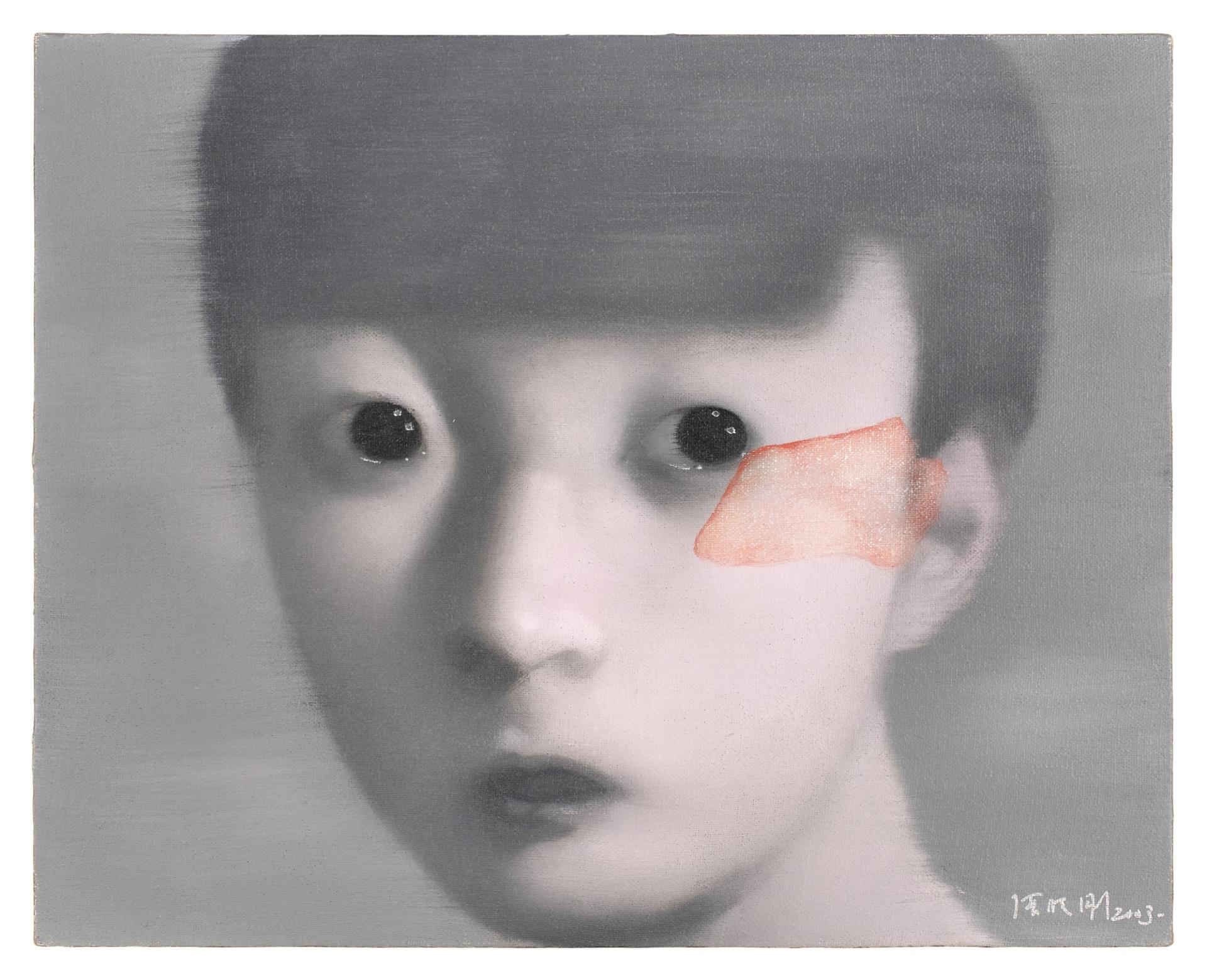
Zhang Xiaogang, Untitled, 2003, oil on canvas

Zhang Xiaogang, Red_Plum, Tree, 2011, oil on canvas

Zhang Xiaogang, Girl with long hair, sculpture, 2015
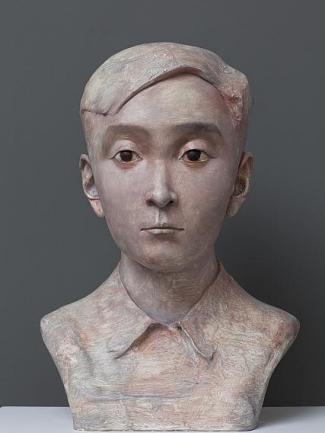
Zhang Xiaogang, sculpture

Zhang Xiaogang, 2016, oil on canvas, Pace Gallery

Zhang Xiaogang, Sigg collection Castello di Rivoli Museum, Turin, 2020

Zhang Xiaogang, Jump No6, 2022, oil on canvas, Pace Gallery

Zhang Xiaogang, Light No.5, 2022, oil on canvas

Zhang Xiaogang, Light No. 10, 2022, oil on canvas, Pace Gallery

Zhang Xiaogang, Role N° 17 2025, oil and mixed media on paper

Zhang Xiaogang
ZHANG XIAOGANG is a contemporary Chinese artist and surrealist symbolist painter. He is famous for his Bloodline Series, stylised and often monochromatic (black and white) portraits of Chinese families, evocative of the Mao era. His paintings are seen as "portraits of the modern Chinese soul".
In 2012, at the Sotheby's sale of the Ullens collection in Hong Kong, a tryptic by Zhang Xiaogang fetched $10 million. 'Bloodline: Big Family No.9' sold at Phillips HK on 27 May 2018: HK$38,350,000. (US$4,889,625).
With cumulative sales of $9.6 million, he ranked 196th in the Artprice 2023 (Sales Revenues) ranking of the contemporary art market worldwide. He ranked 6th in the Hurun China Art List 2023, with sales of $16.9m.
https://www.instagram.com/xiaogangzhang/
PROFILE OF THE ARTIST
Zhang Xiaogang was born in 1958 in Kunming. In 1963, his family moved to Chengdu in Sichuan province. He graduated from the Sichuan Fine Arts Institute in 1982. He lives in Sichuan and Beijing.
Zhang Xiaogang uses his memory to recreate a highly personal version of his country's history. His portraits of imaginary families in his Bloodline, the big family series from the early 1990s, inspired by old family photographs, question the place of the individual in the family and in modern Chinese society, the aspirations and failures of the Cultural Revolution, as much as his own emotions. Often in black and white, his portraits translate the language of photography into painting.
In 1986, Xhang Xiaogang formed the South West Art Group with a number of his contemporaries. He began to make a name for himself in the 1990s. In 1994, he presented his series 'Bloodline: The big family' at the 22nd Sao Paulo International Biennial in Brazil and in 1995 at the Venice Biennial. After spending 3 months in Germany, where he met Gerhard Richter and other famous artists, he came up with the idea for his Bloodline series. His career took off in the 2000s: forced to export his oil paintings when China refused to accept any work recalling the Cultural Revolution, he became much sought-after by gallery owners and collectors in Taiwan, Hong Kong, Europe and the United States. He thus began an international career with a series of exhibitions abroad - in North and South America, Europe and Australia. In 2002, Zhang Xiaogang began his dream-like 'Amnesia and Memory' series which, like the 'Bloodline' series, examines the way in which memories are constantly recaptured in the present.
Zhang Xiaogang has become a landmark of contemporary Chinese art and a legend in his own right.
The artist is currently devoting himself to sculpture. His monumental sculptures of heads and busts are a perfect continuation of his Bloodline family portraits.
In his works presented at the Pace Gallery, New York, in September-October 2018, Zhang Xiaogang always used narrative scenes and portraits. The artist introduced collage compositions into his practice, tearing and layering paper material into textured works.
Inspired by his 40 days in quarantine during the Covid 19 pandemic, the artist has made everyday objects the focal point of his canvases. In his exhibition “Lost” at Pace gallery HK in 2023, Zhang Xiaogang examined objects such as sinks, flashlights and books in his series Light (2022).
In his exhibition Enimagta in Kunming in late 2023, Zhang Xiaogang presented representative works from different periods of his career and their connections to literature. In particular, unexhibited early works, his journal entries, letters, sketches, and other private jottings.
Song Art Museum in Beijing presented a retrospective of Zhang Xiaogang, from 13 September to 4 December 2025: "Readers and Authors." The exhibition explored the artist's dual identity as both reader and author.
EXHIBITIONS
Zhang Xiaogang's recent solo exhibitions include: 2025 "Readers and Authors" Retrospective, Song Museum, Beijing ; 2024 “Mirror of Illusion”, Fosun Foundation, Chengdu, China ; 2023 Zhang Xiaogang: Enigmata, Contemporary gallery, Kunming, China, "Lost" Pace Gallery HK, Zhang Xiaogang: Mayflies, Long Museum, West Bund, Shanghai, "Past", Pace Gallery, Hong Kong; 2022 Little Things, Pace Gallery, Geneva; 2021 Zhang Xiaogang/RenRong: Ost-West Dialog, Osthaus Museum Hagen.
Xhang Xiaogang participated in group exhibitions: 2024, Golden, Beijing 1st and scd space, 2023 and 2022 Chewing Gum VI et V at Pace Gallery Hong Kong
Zhang Xiaogang was one of the artists selected for the exhibition 'Art and China' after 1989, Theater of the World', at the Guggenheim Museum in New York (Oct 6, 2017 - Jan 7, 2018.
PAST EXHIBITIONS
LIU YE

Liu Ye, The Second Story, 1995, oil on canvas, Private collection


Liu Ye, Beijing Madonna, 1997, watercolour on paper

Liu Ye, For Mondrian Silkscreen printed in colours, 2000

Liu Ye, Mondrian in the afternoon, 2001, acrylic on canvas

Liu Ye, Ruan Lingyu 3, 2002, oil on canvas, Sammlung Sigg, Mauensee

Liu Ye, Eileen Chang, 2004, acrylic on canvas, Yao-Chien-Taipei-Pechino, Courtesy Fondazione Prada

Liu Ye, composition with bamboo and tree, 2007, acrylic on canvas
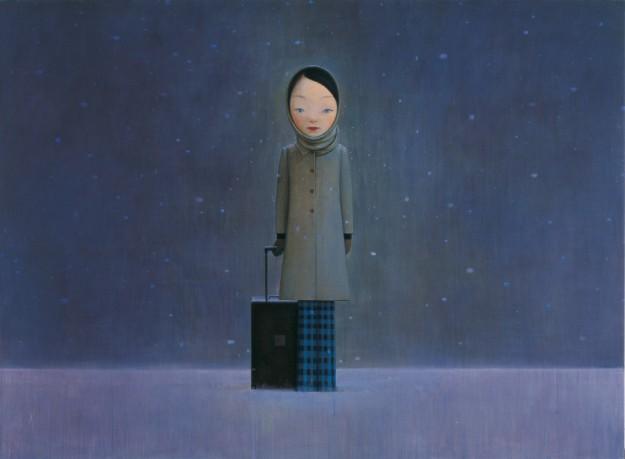
Liu Ye, Leave me in the dark Exhibition, 2009, Sperone Westwater gallery NY

Liu Ye, The Goddess, 2018, acrylic on canvas, Collezione privata Berlino, Courtesy Fondazione-Prada

Liu Ye, Jorge Luis Borges, 2022 2023, acrylic on canvas, David Zwirner gallery

Liu Ye, Flower No. 5 (Homage to Karl Blossfeldt), 2022-2023, Acrylic on canvas mounted on wood panel
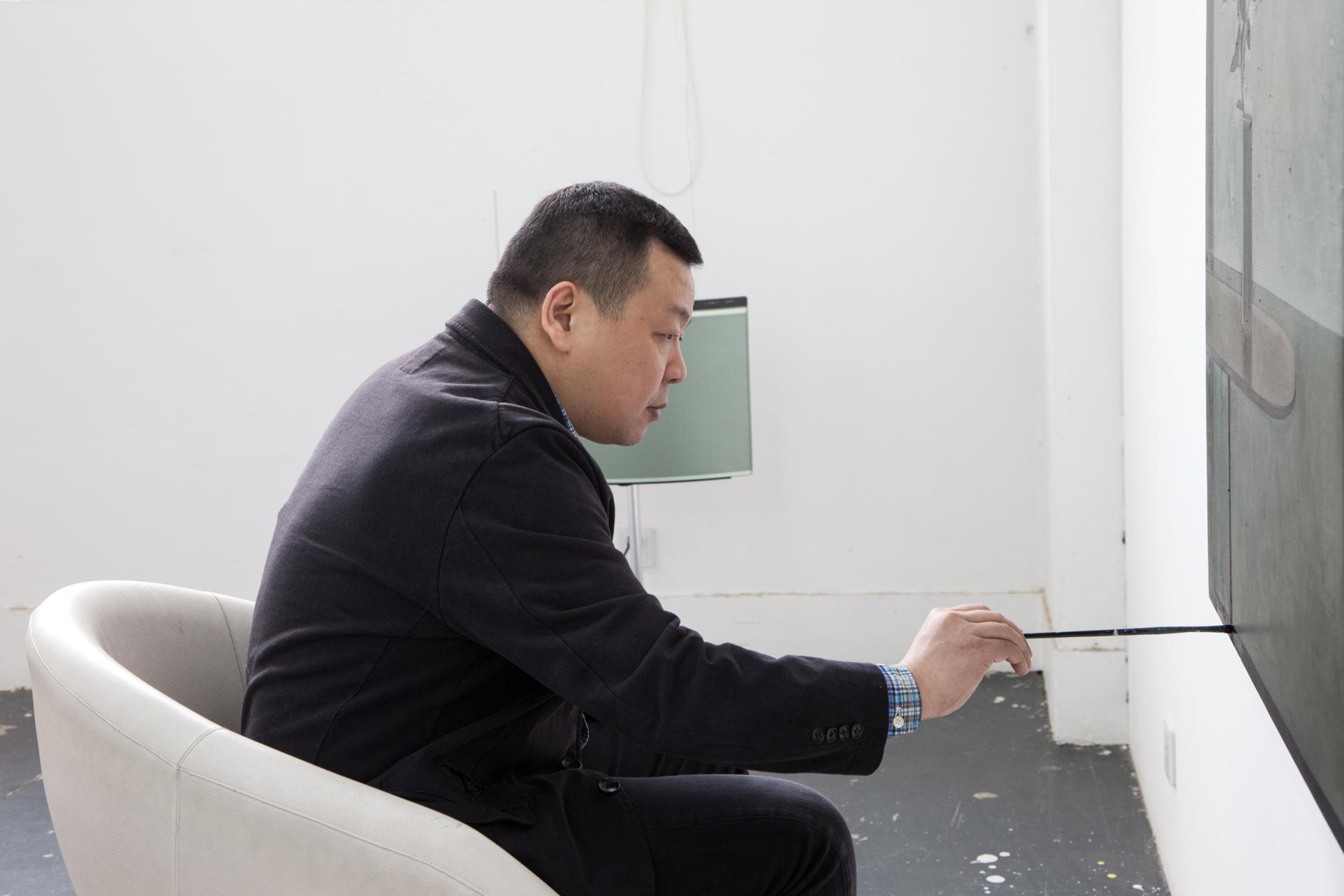
Liu Ye
LIU YE is one of China's most famous contemporary painters. He is known for his use of bright colors and childlike female figures. He is inspired by Pet Mondrian and Paul Klee.
Liu Ye was 47th in Artprice's top 500 list of the world's best-selling artists at auction (Sales 2023), with sales of €31m. In 2022, he was ranked 45th in Hiscox's Top 100 artists, with sales of $4.9 million.
His work “Beijing Madonna” (1997) sold for €47,900-71,800 ($51,300-76,900) at Phillips HK at the end of April 2024.
https://www.instagram.com/liuyeart/?locale=fr_FR
PROFILE OF THE ARTIST
Liu Ye was born in Beijing in 1964. His father was a writer and collector of children's books. Liu Ye's talent for illustration was obvious, so his father decided to teach him under the guidance of Tan Quanshu, a well-known illustrator in China. At the age of 13, he was diagnosed with amblyopia in his left eye. However, at the age of 16, Liu Ye enrolled at the Beijing School of Arts and Crafts (Industrial Design Section), where he began to learn about contemporary Western art. He graduated in 1984. After spending a few years working in a commercial establishment, he then joined the Beijing Central Academy of Fine Arts, specializing in mural painting, from 1986 to 1989. While working as an illustrator to earn a living, he decided to take the entrance exams for the Berlin University of the Arts, where he was admitted. He obtained his MFA in 1994.
Liu Ye returned to China in 1994. He began his life as an artist. In 1998, he was accepted as artist-in-residence at the Rijksakademie in Amsterdam. This was followed by an internship at the Delfina Studio in London. Since his return to China, he has lived and worked in Beijing.
Liu Ye is famous for his cartoon character “Miffy the bunny”. In his work, he refers to one of his favorite artists - Piet Mondrian. His style is simple and highly recognizable. Unlike many of his Chinese contemporaries, Liu Ye is a self-declared non-political painter who doesn't believe his art is particularly Chinese. Indeed, he was exposed to Western literature from an early age. His family was privileged to have dozens of books at home during the Cultural Revolution, including the illustrated works of Hans Christina Andersen, Tolstoy and Pushkin. The influence of these books on her work is evident in the childlike naiveté and romantic serenity that characterize her paintings.
Liu Ye paints characters such as the “Little Mermaid” (Walt Disney) and especially “Miffy the Bunny,” a cartoon character created by Dick Bruna. Her best-known works include “She and Mondrian,” 2001 and “Leave Me in the Dark,” 2009.
In 2017, Liu Ye's work was presented at the 57th Venice Biennale (Viva Arte Viva).
In March 2019, Liu Ye joined David Zwirner Gallery, Los Angeles;
EXHIBITIONS
Recent solo exhibitions include: 2023, Liu Ye, Naive and sentimental painting, David Zwirner Gallery, London. 2021-2022, Liu Ye: Pierre Menard, New Century Art Foundation, Beijing. Liu Ye: Storytelling, Prada Rong Zhai, Shanghai . 2021 Liu Ye: Internationale Architektur, Esther Schipper, Berlin.
In 2024, Liu Ye participated in the 30th anniversary of David Zwirner Gallery, Los Angeles.
PAST EXHIBITIONS
YANG YONGLIANG
YANG YONGLIANG is a Chinese contemporary artist, photographer, painter, videographer and visual artist.
https://www.yangyongliang.com/
https://www.instagram.com/yangyongliang/?utm_source=ig_embed&ig_rid=b74c0f16-02a0-40f7-82a0-0961e600df52
NEWS
Yang Yongliang participates in the group exhibition "Romance, Regret, and Regeneration in Landscape", at The 8th Floor gallery in New York, from 18 September to 13 December 2025
PROFILE OF THE ARTIST
Yang Yongliang was born in Jiading, Shanghai, in 1980. At a very young age, he studied traditional Chinese painting with calligraphy master Yang Yang (professor at Hong Kong Chinese University). He studied visual communication at the Shanghai Arts and Crafts Vocational College in 1995. He graduated from the Shanghai Institute of Design, China Academy of Arts, (visual communication and design) (1999). In 2004, he set up his own studio with friends and began experimenting with ink painting, photography, short films and videos. He was a professor at the Shanghai Institute of Vision Art (2006-2008). He lives and works in Shanghai.
Yang Yongliang works with photography like a painter. "I used to paint traditional landscapes, but I felt that the Chinese style had reached a peak - there was no way to progress. I wanted to find a new, more contemporary medium that could capture the spirit of landscape painting. Digital photography seemed to be the answer," explains the artist.
The overall view of his work reminds us of a landscape, but a careful analysis, a zoom on a particular scene, shows an image made up of man-made forms and the representation of an urban context. The trees characteristic of classical paintings from the Song dynasty become metal trellises or poles from which power lines are drawn. "Yang Yongliang challenges our collective consciousness, questioning our economic, environmental and social problems, foreseeing the devastating effects of unbridled urbanisation and industrialisation in China and abroad," explains Paris-B gallery. "I despair at the pace of urbanisation in China - it's like witnessing a person's death," Yang Yongliang declared.
In 2006, Yang Yongliang began his Phantom landscapes series of photo collages. In his video Phantom landscape, the artist superimposed scenes of modern urban life onto images of peaks and waterfalls in a traditional Chinese landscape (shanshui, mountains and water) from the Northern Song dynasty. A powerful waterfall rushes down a busy street, but like an illusion or a ghost, the water does not flood the street and has no impact. At a medium distance, waterfalls cascade like Niagara Falls.
Artificial Wonderland II' (2014) features digital replicas of two major paintings from the Song dynasty, 'Travelers Among Mountains and Steams' (Fan Kuan) and 'Wintery Forest in the Snow'. This series marks a step forward for the artist in terms of digital technique, and here the images of mountains and rocks are those of Iceland and Norway.
In his 'Time Immemorial' series (2016), the contemporary urban imagery of total decomposition is still there: the mountains covered with giant ruined skyscrapers will soon be flooded by rising waters, covering more and more of the surface. In this series, "the original digitally created images are printed in negative on a sheet of fine art paper. Each image is then photographed with a traditional 8 × 10 inch silver camera," explains the Paris-B gallery. Finally, the hand-developed film is mounted on a backlit wooden case, in keeping with the artist's intention to preserve a digital image on traditional photographic film.
In his exhibition 'Time Immemorial' at Galerie Paris-B at the end of 2017, Yang Yongliang presented three new videos 'Journey to the Dark' (2017), 'Prevailing Wind' (2017) and 'Endless Streams' (2017), which used 4k technology for the first time.
In 2023, Yang Yongliang has taken up filmmaking, releasing his first short film "Vanishing Shore". The film is about the exile of two children who have left their hometown and seek to find a balance between freedom and regret by joining the sea.
EXHIBITIONS
Yang Yongliang has had numerous solo exhibitions around the world since 2008.
Recent solo exhibitions include: 2025 “Vanishing Mountains”, Whitestone gallery, Beijing ; 2024 ‘Imagined Landscapes’, Abbaye, Espace d'Art Contemporain, Fondation Claudine et Jean Marc Salomon, Annecy," Vanishing Shore', HOW Art Museum, Shanghai, Shan Shui Reboot: Re-envisioning Landscape for a Changing World, China Institute, New York, USA; 2023 Yang Yongliang: Vanishing Landscape! Sullivan+Strumpf, Singapore, Yang Yongliang: Imagined Landscape, Galerie Paris, Beijing, Paris; 2022 Imagined Landscape, Whitestone Gallery, Taipei, Taiwan, Reflection, UOB Art Gallery, Shanghai; 2021 Journey to the Dark II, Fotografiska, Stockhom, Sweden Imagined Landscape, Sullivan+Strumpf, Sydney, Australia Imagined Landscape, Matthew Liu Fine Arts, Shanghai, China
Galerie PARIS‑B presented Yang Yongliang at Asia Now Paris Art Fair (22-26 Octobre 2025)
PAST EXHIBITIONS















